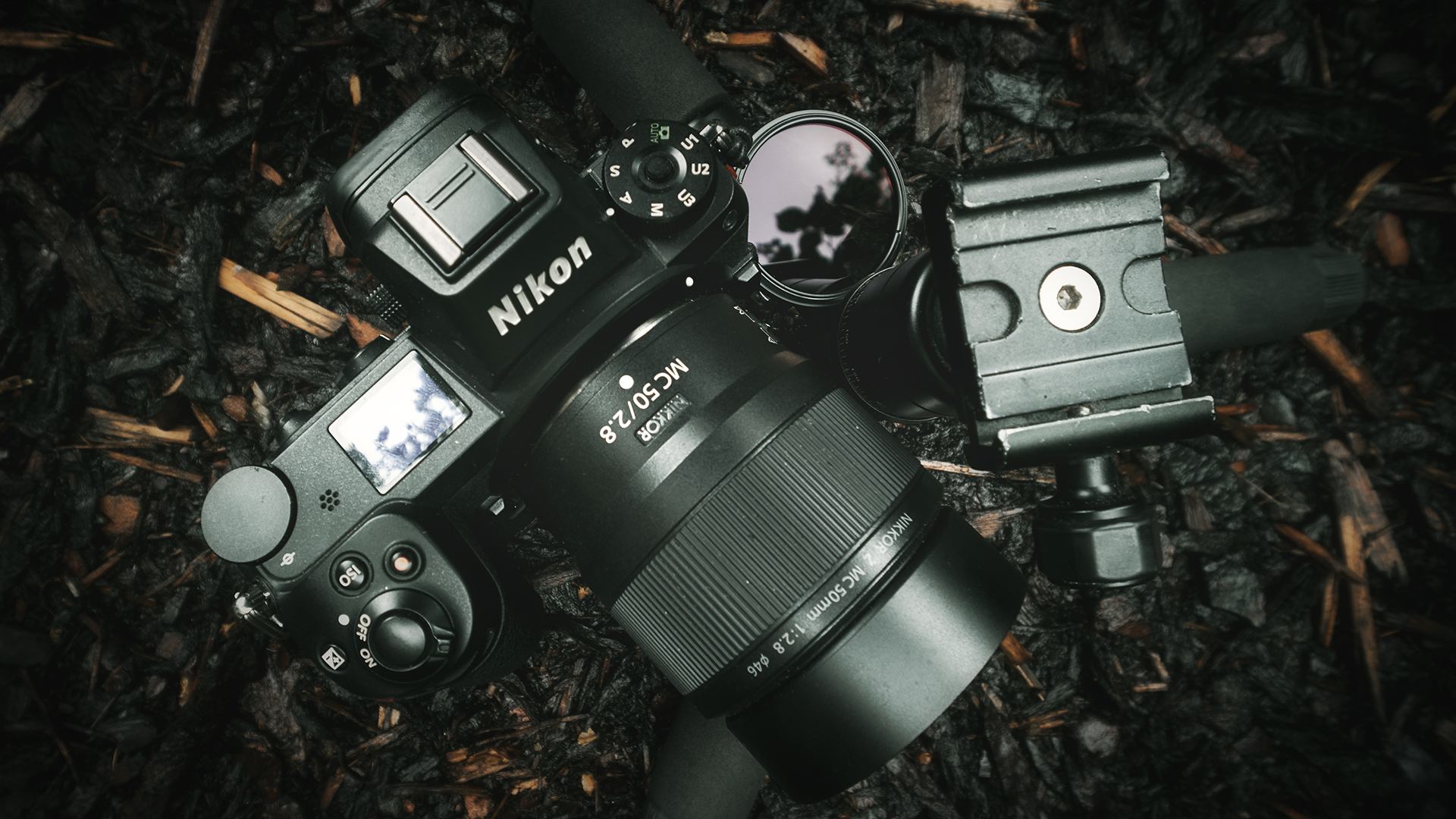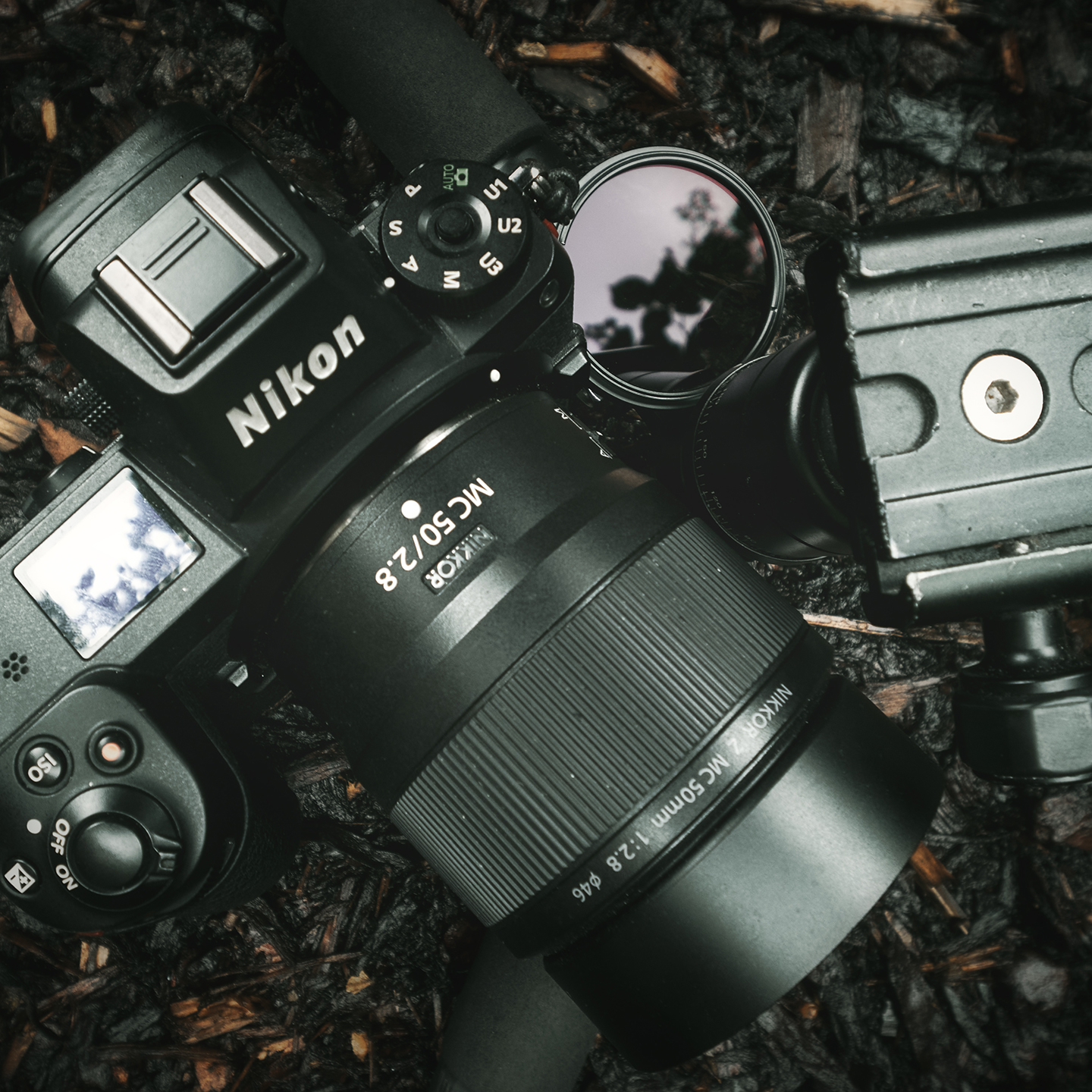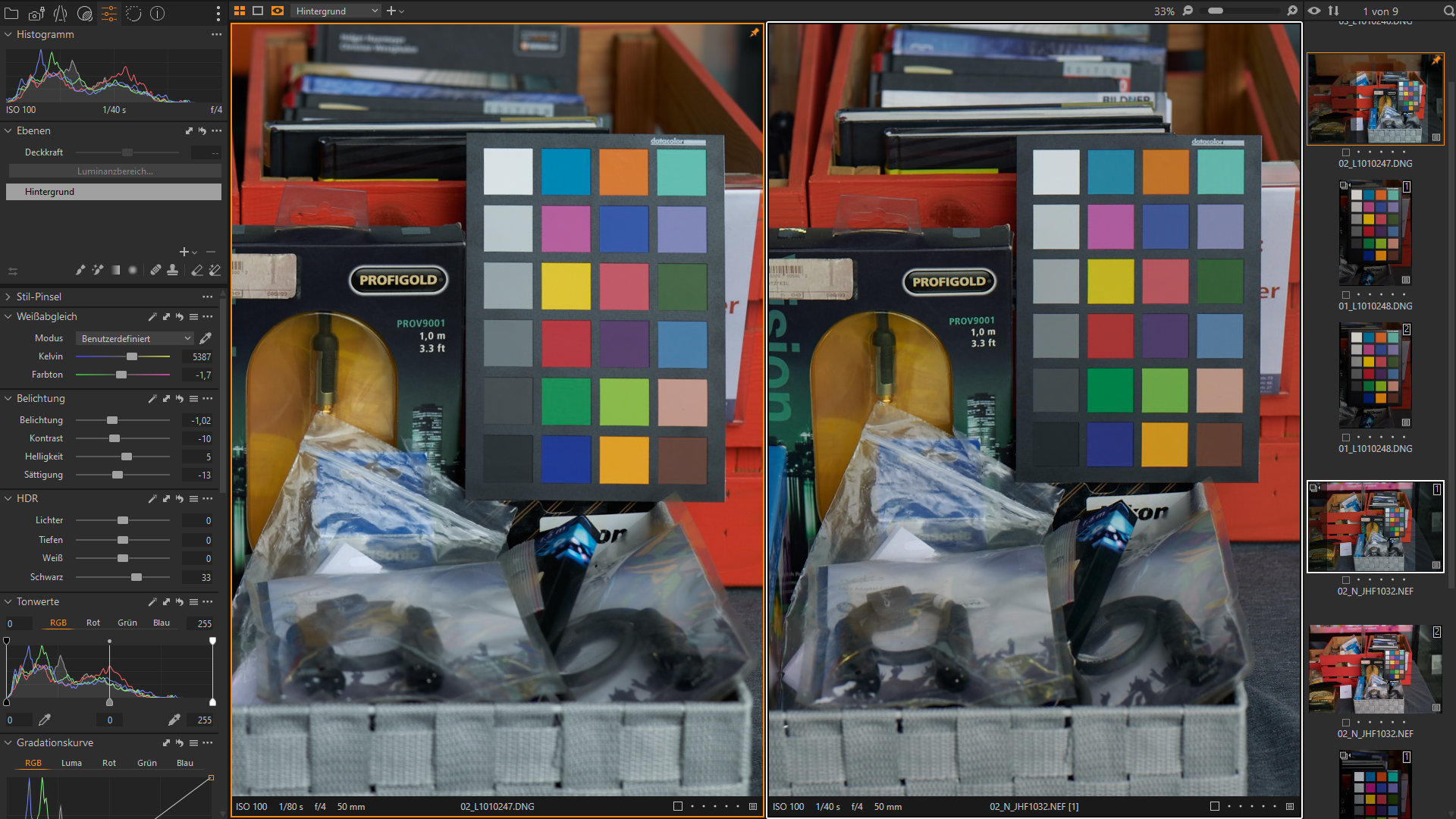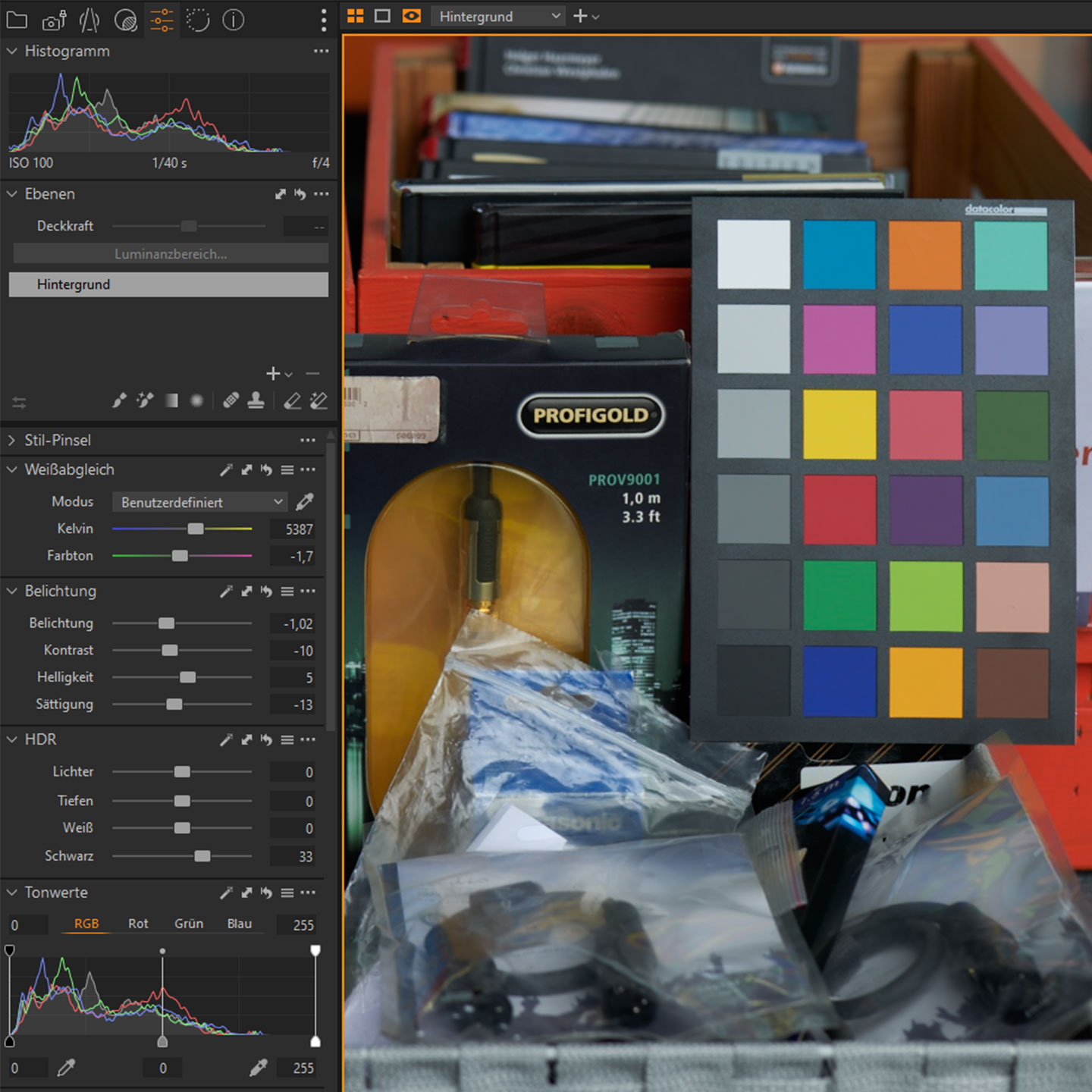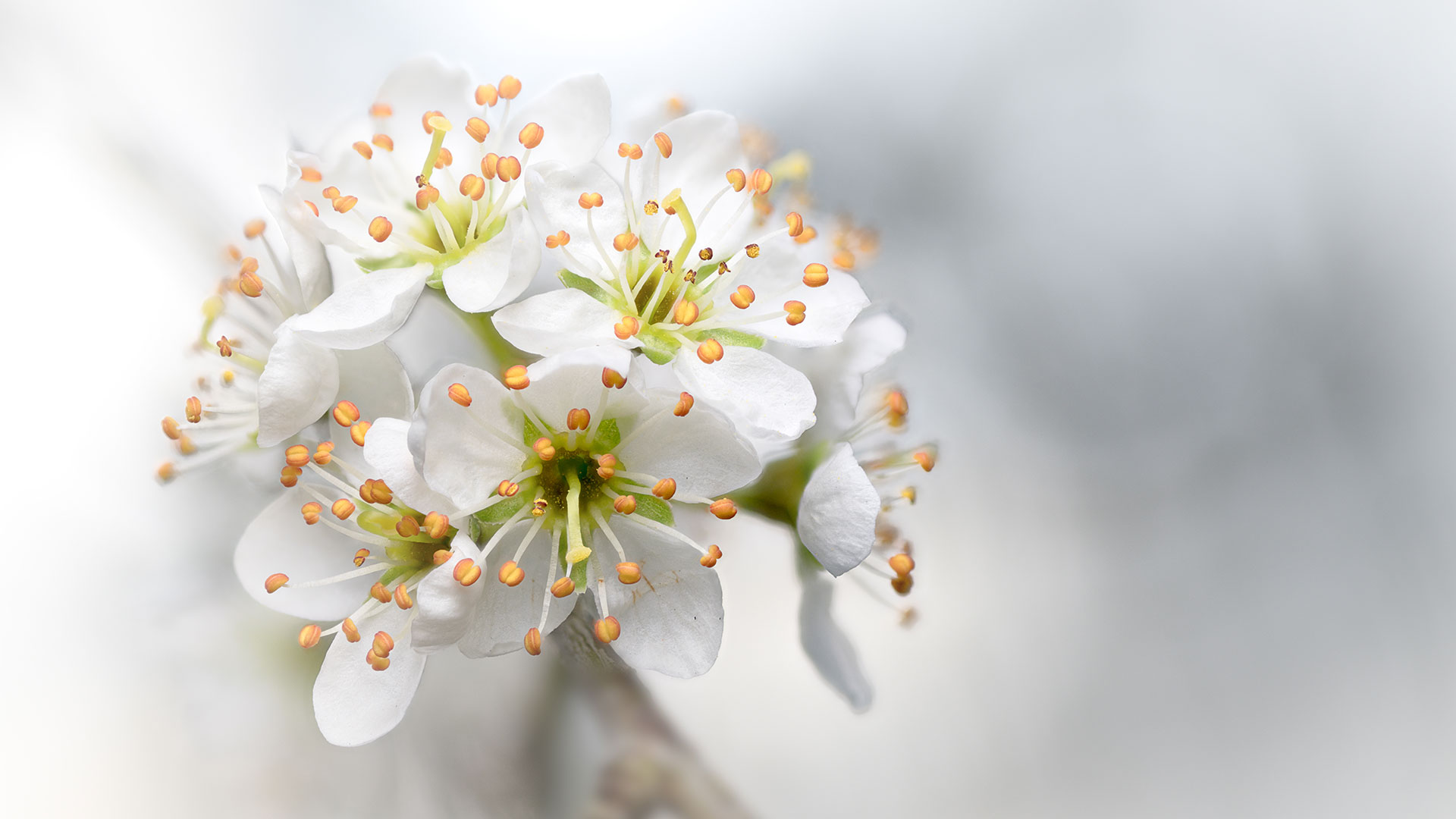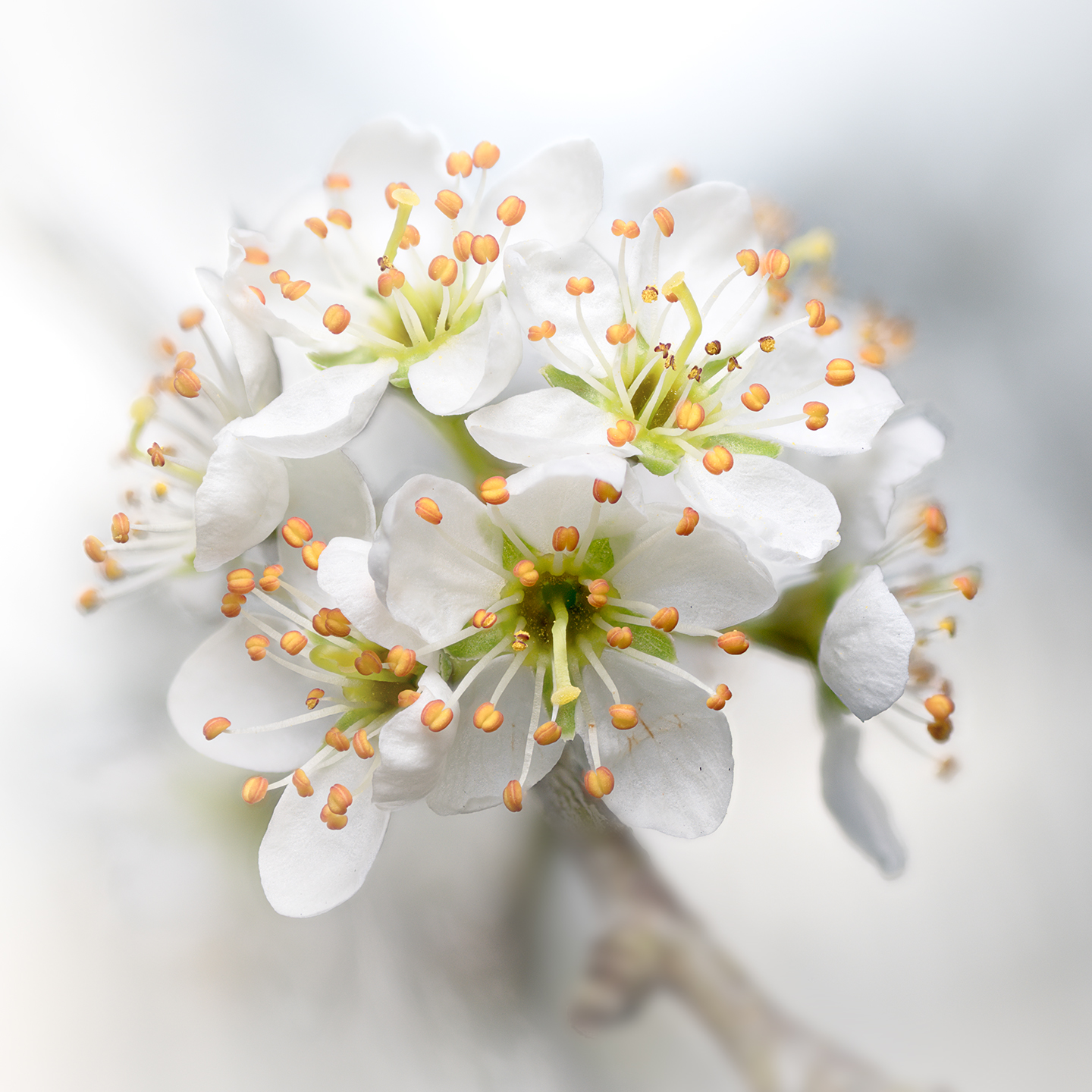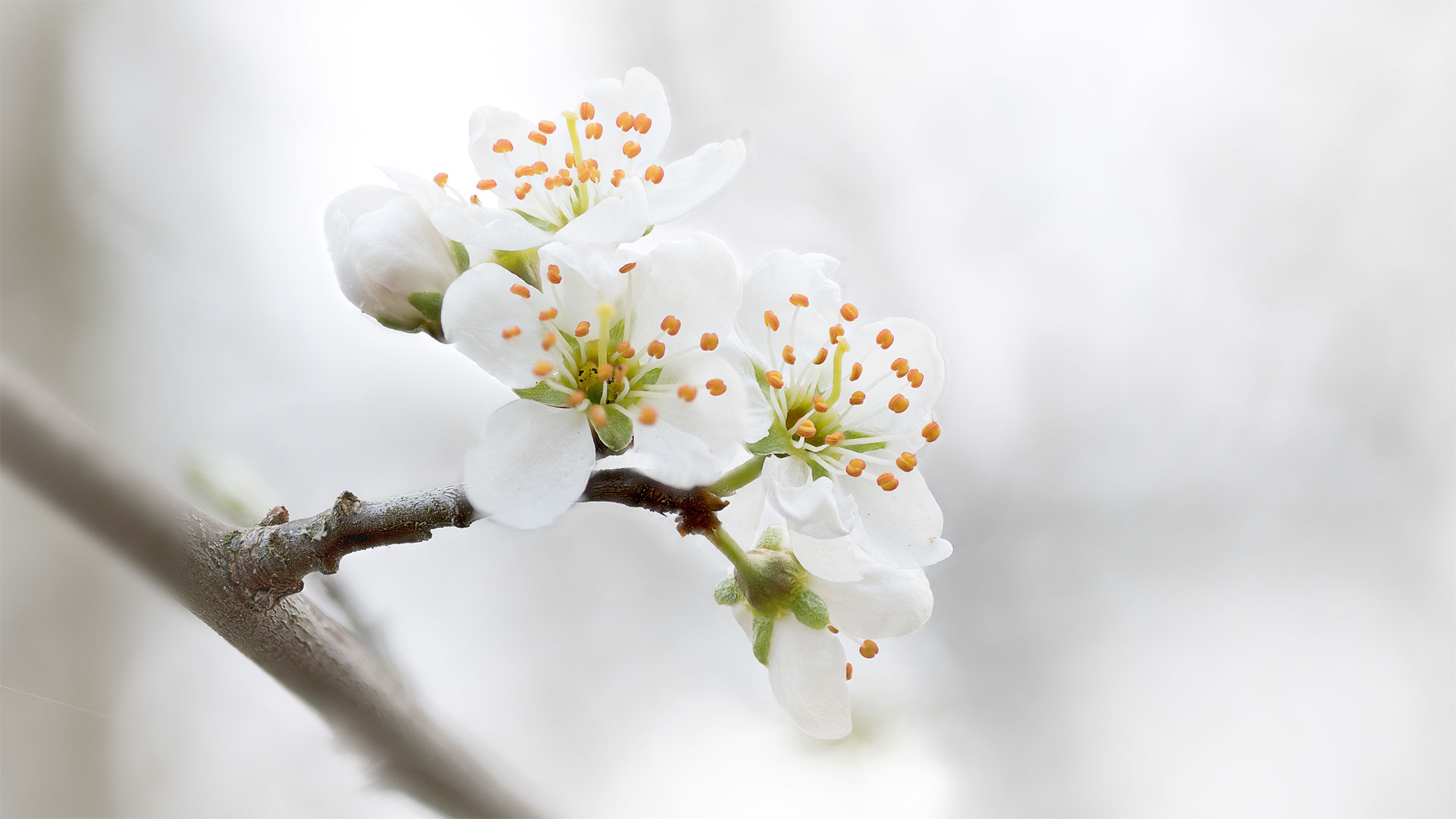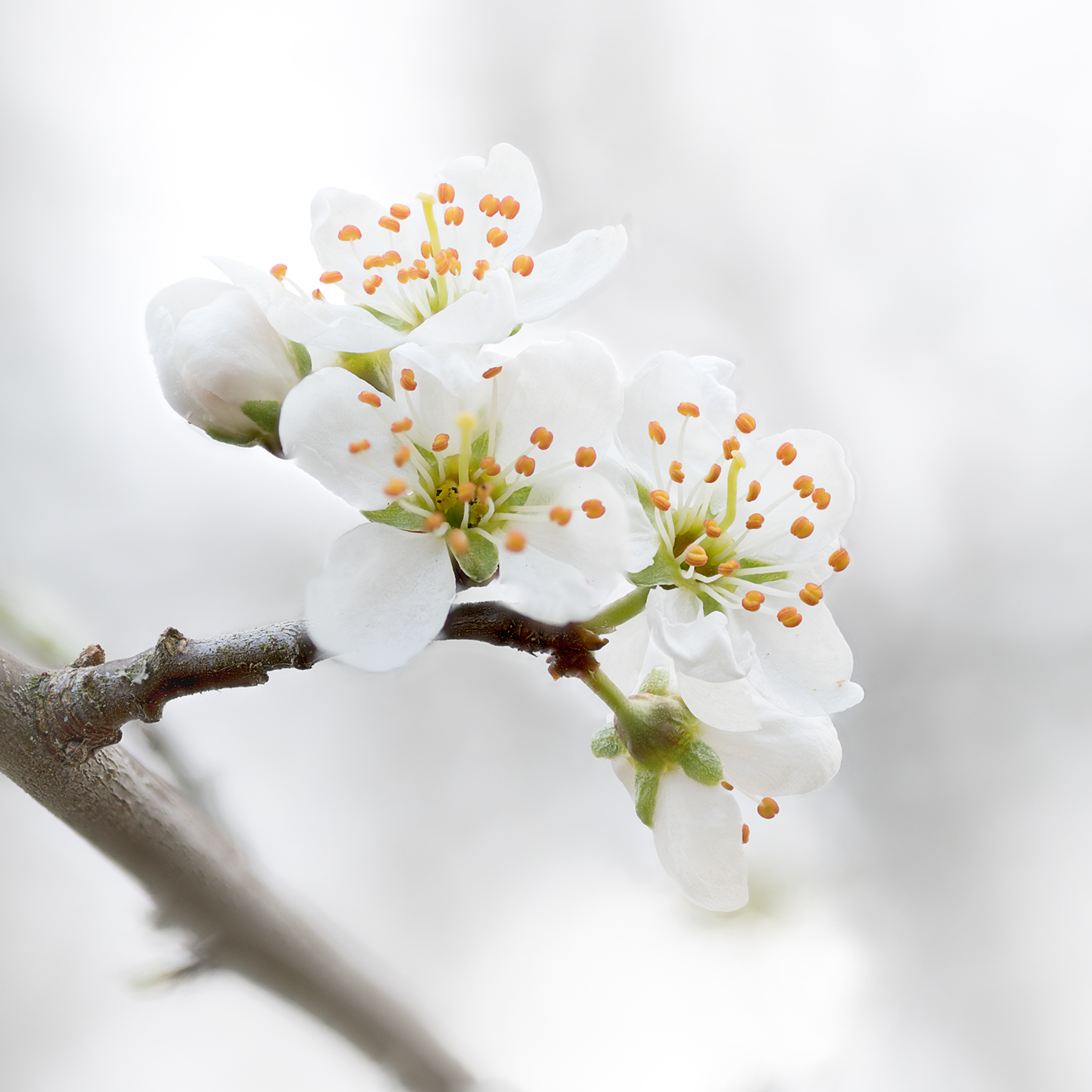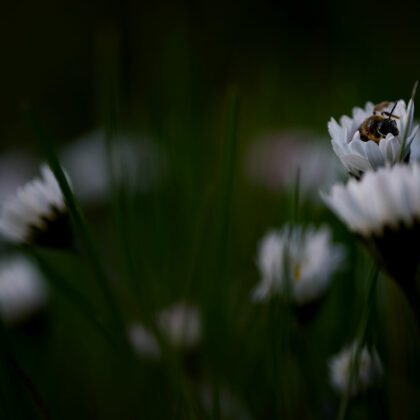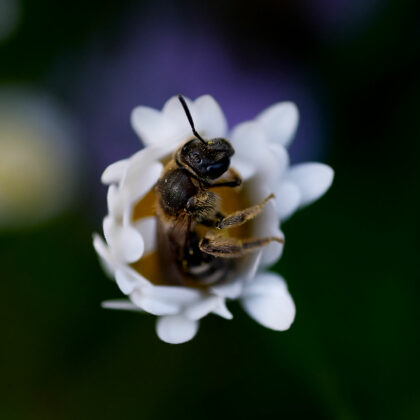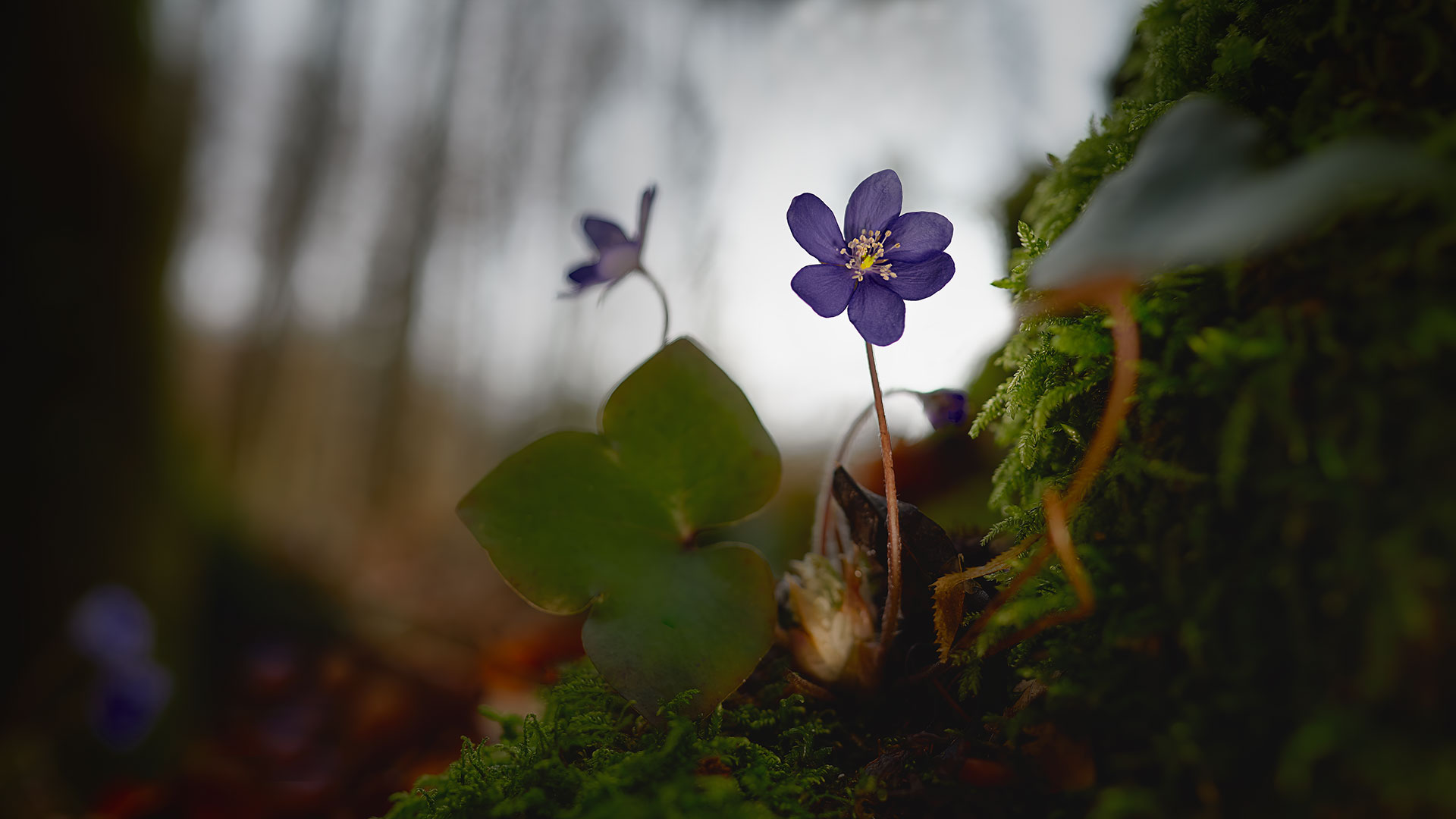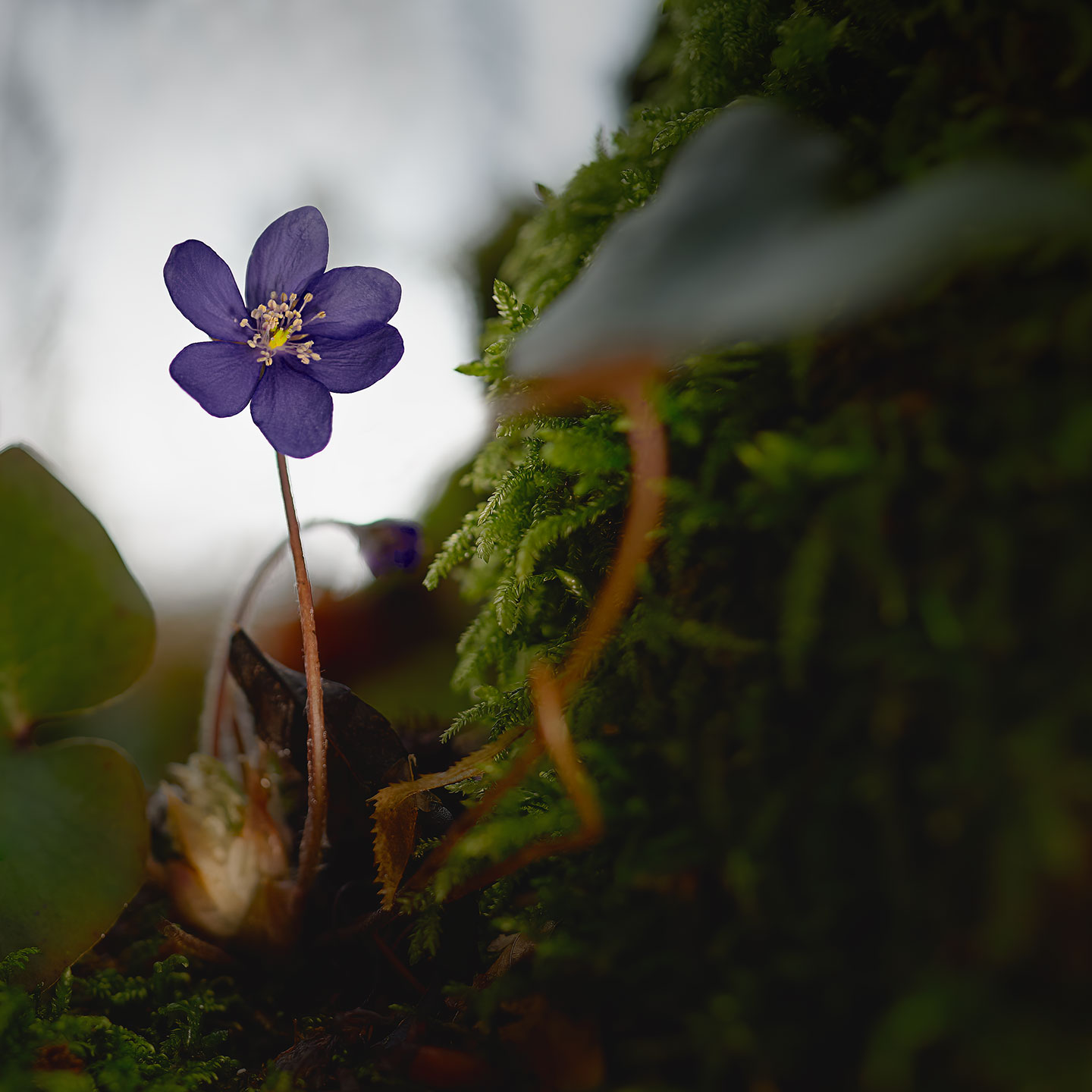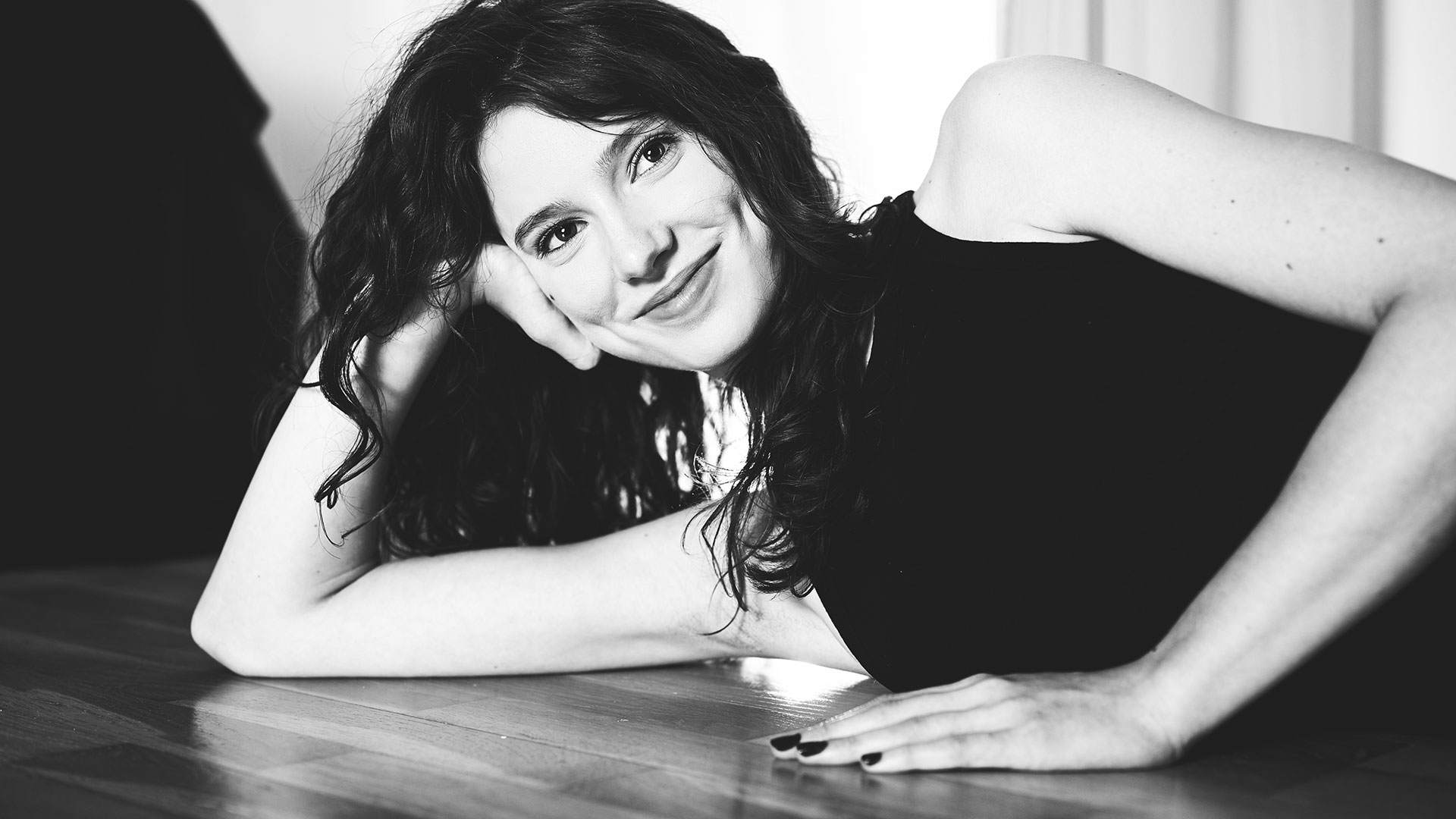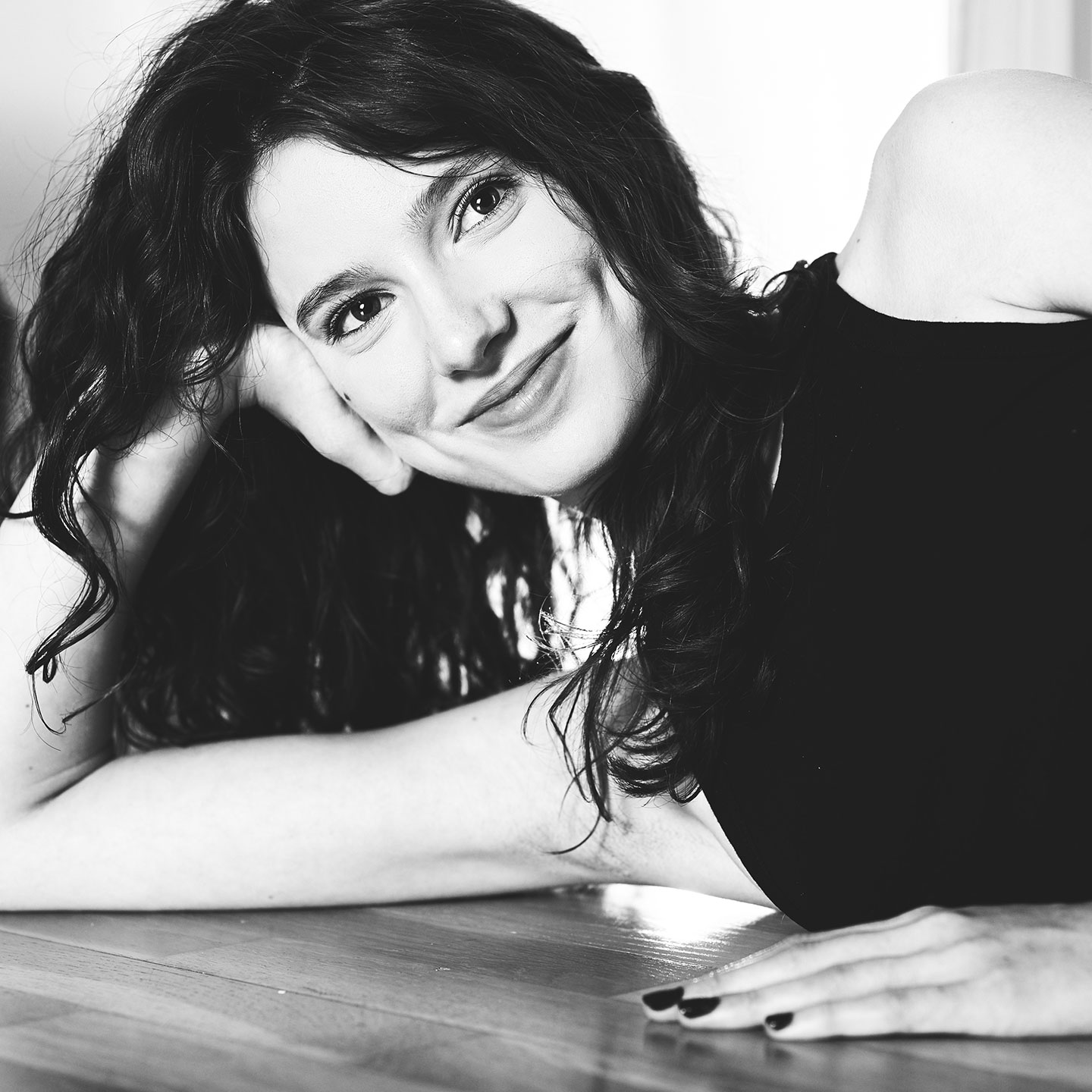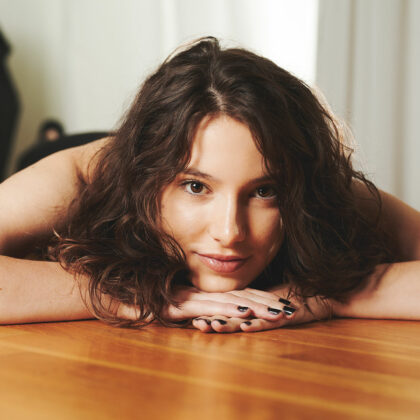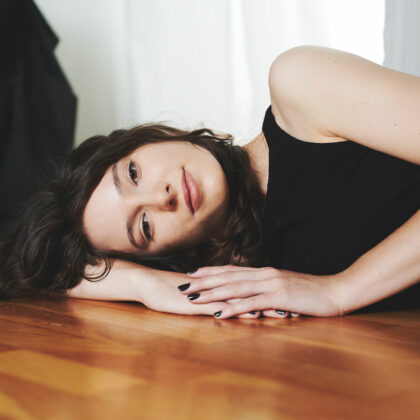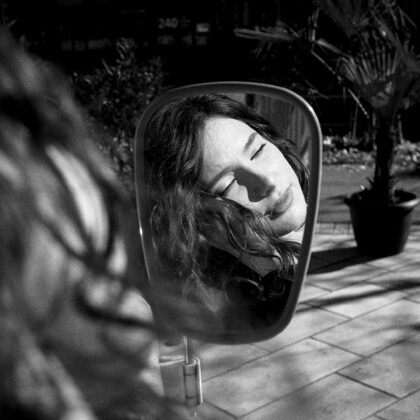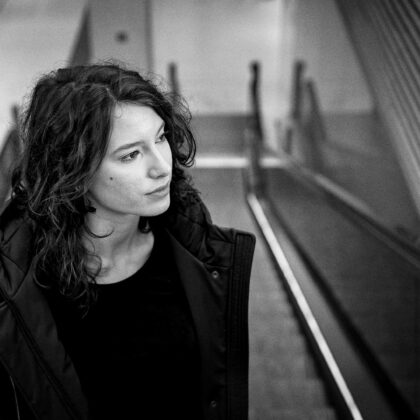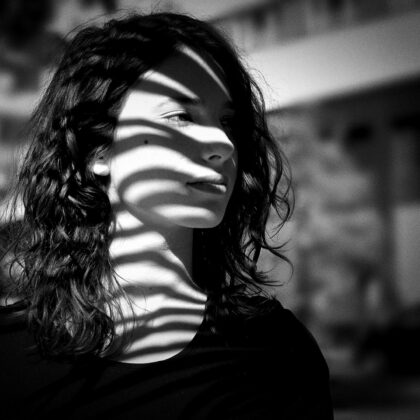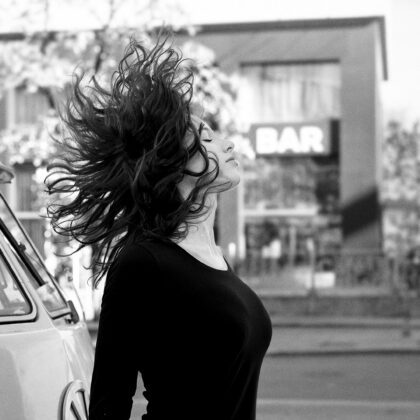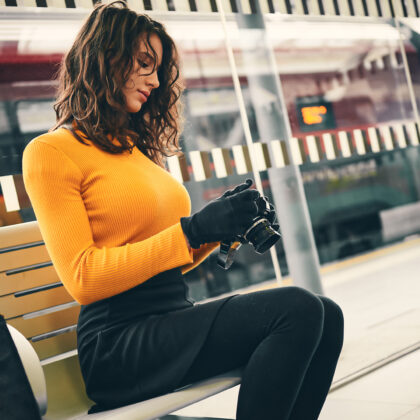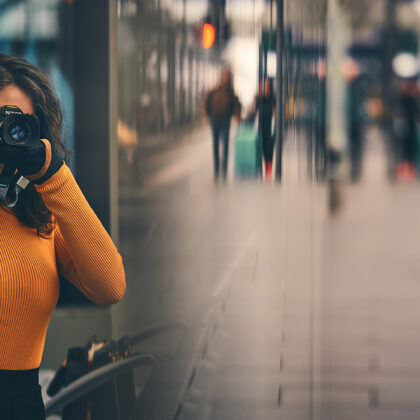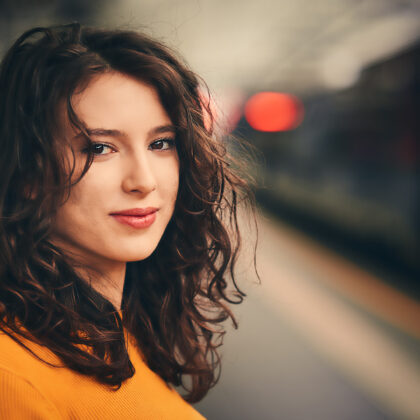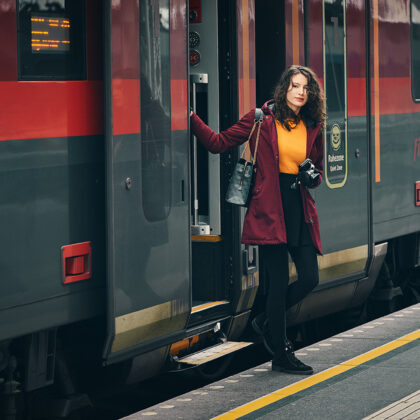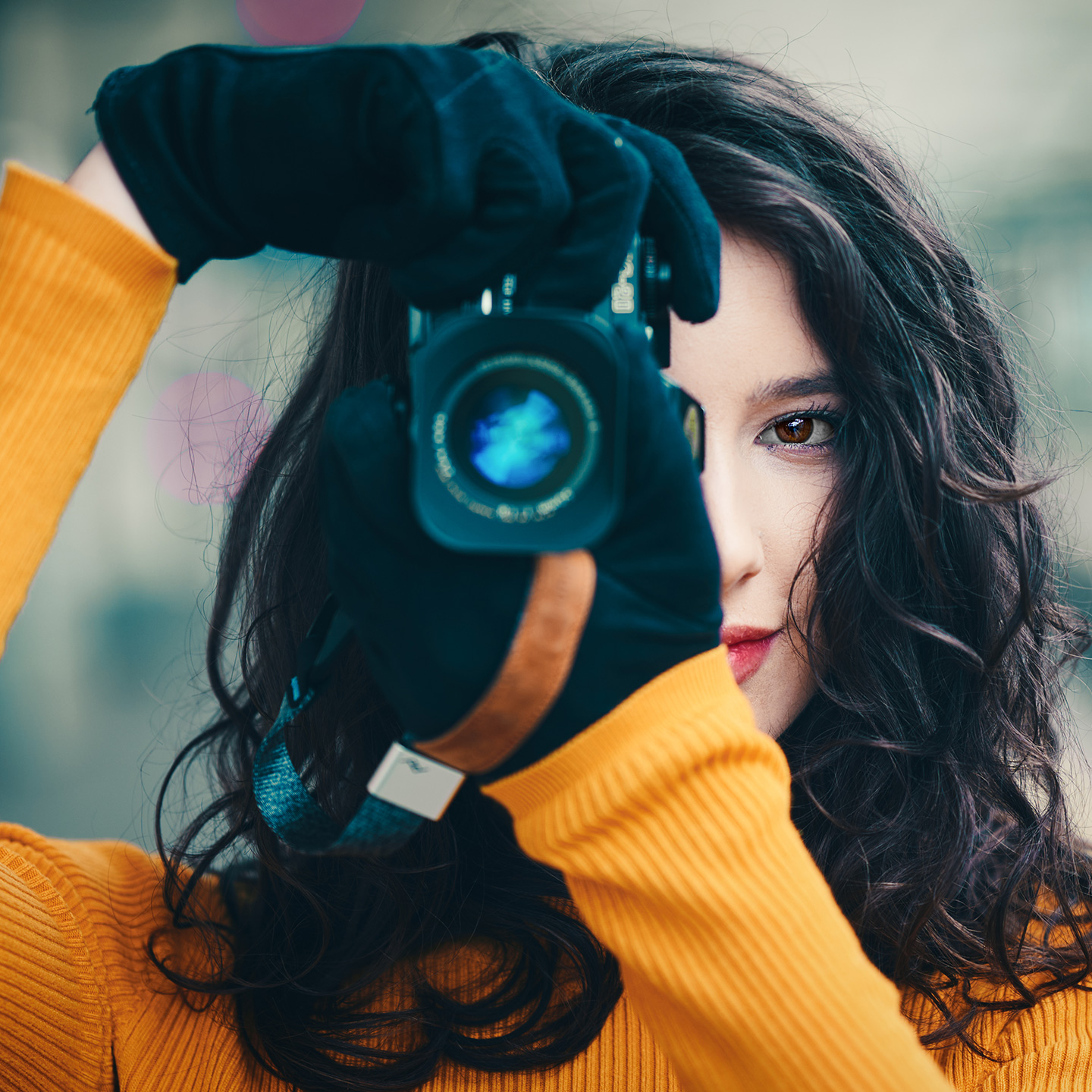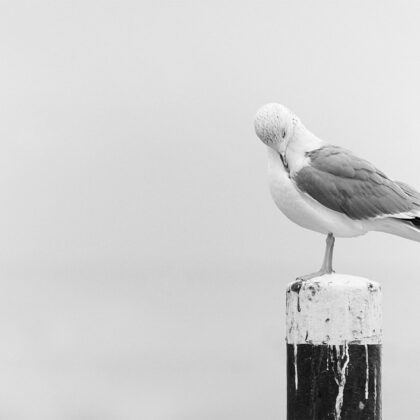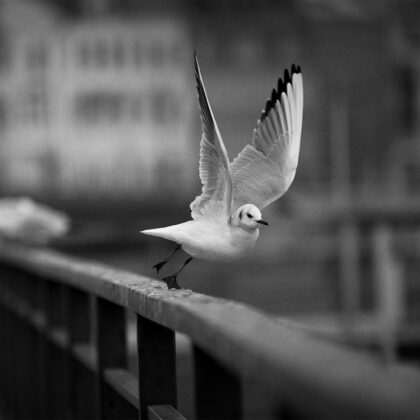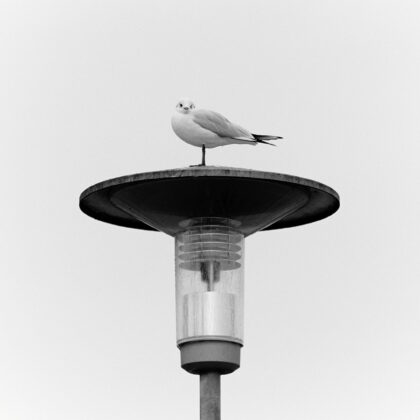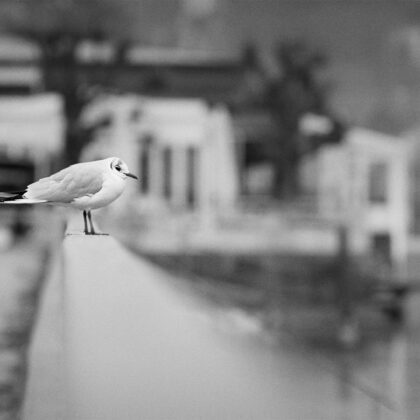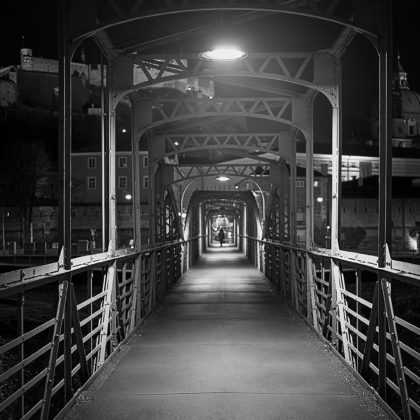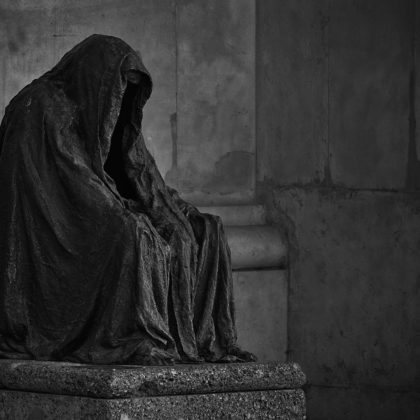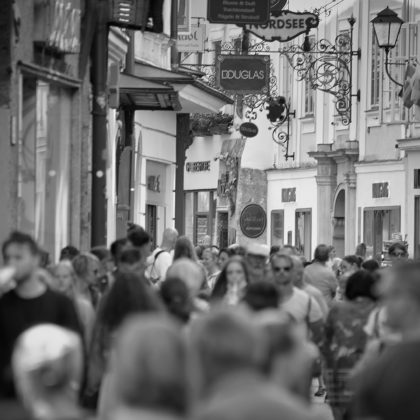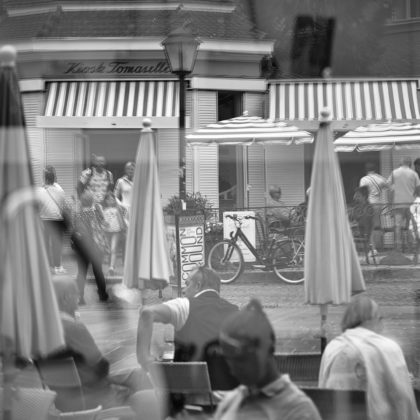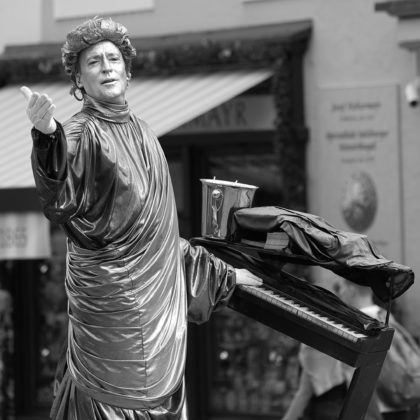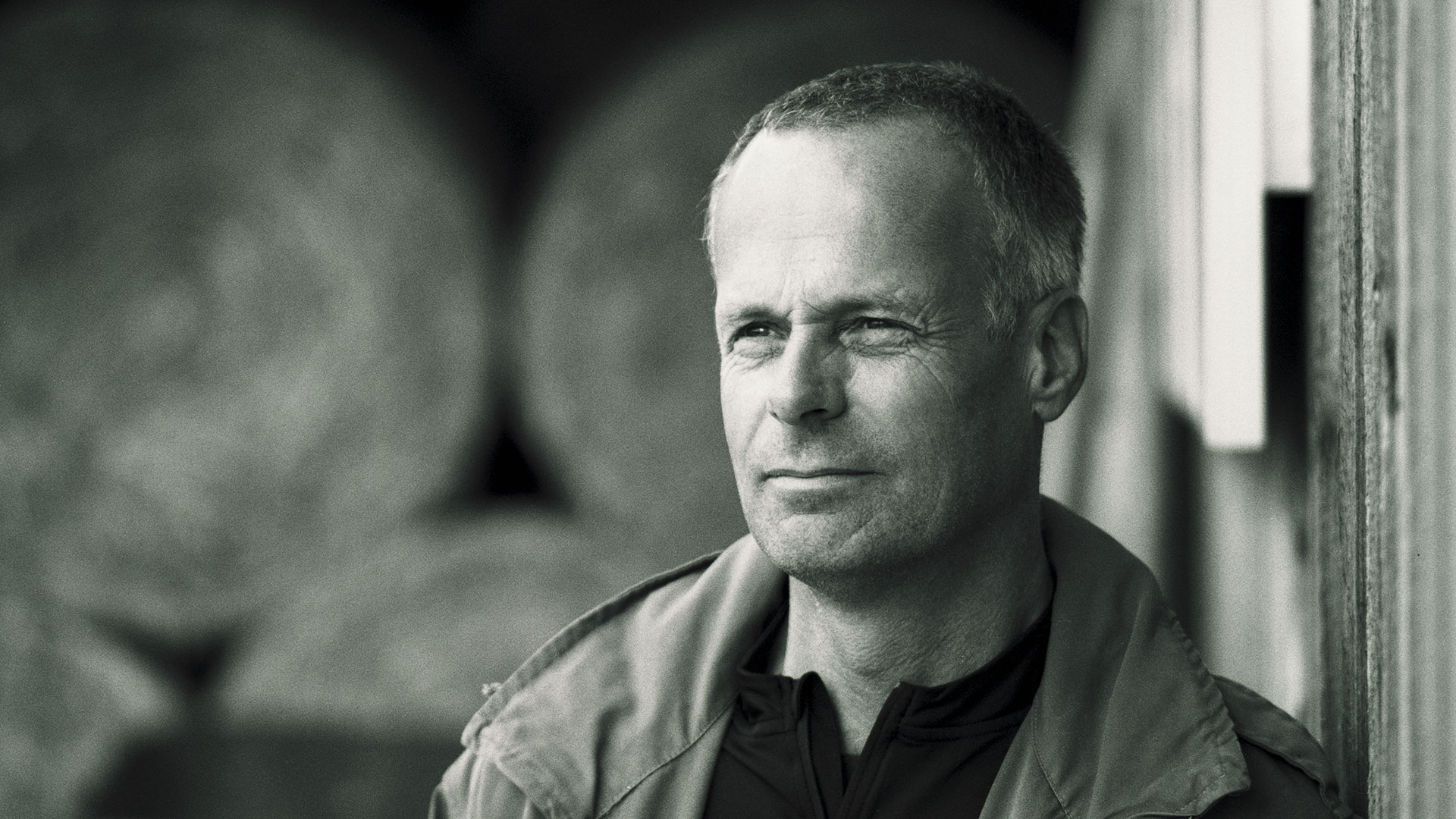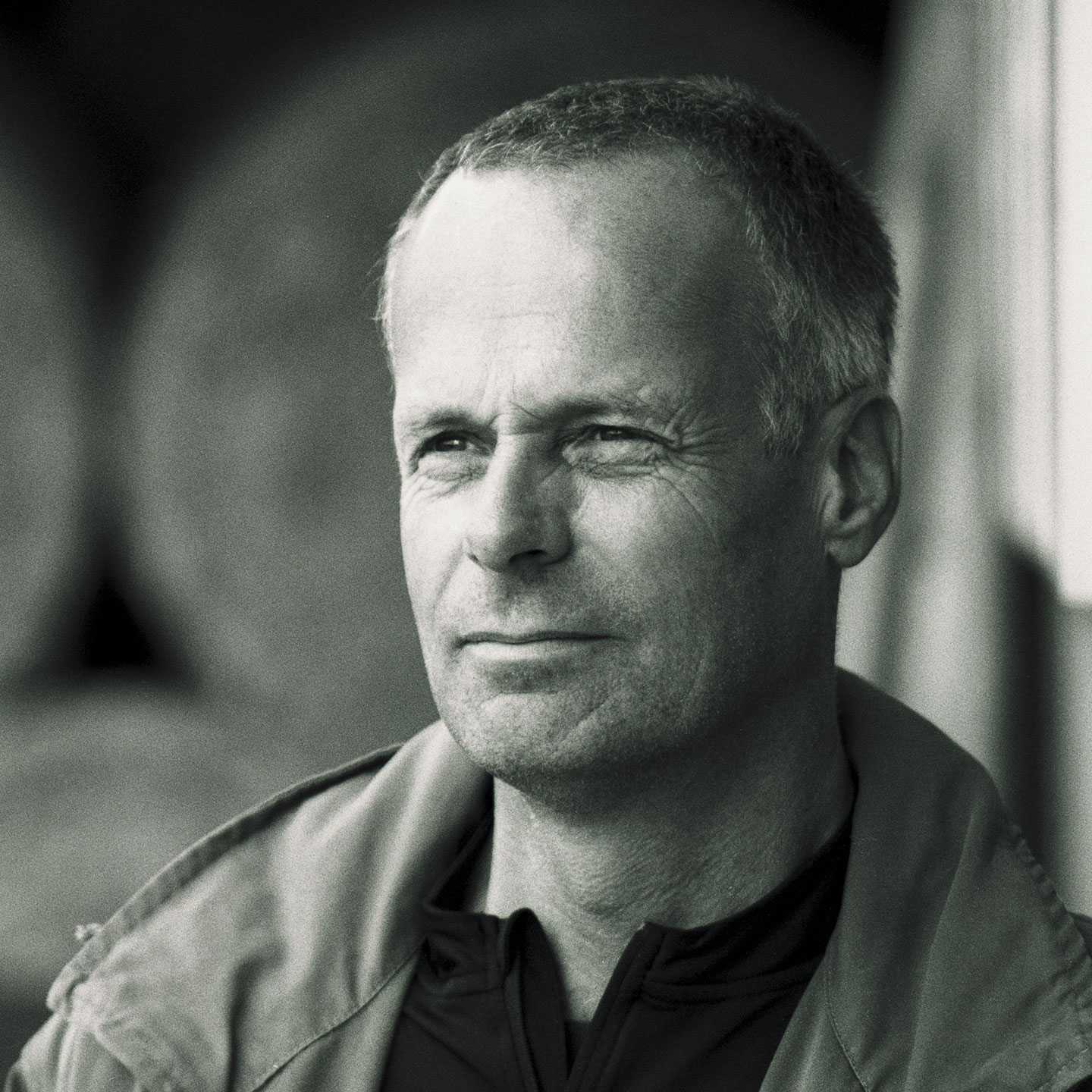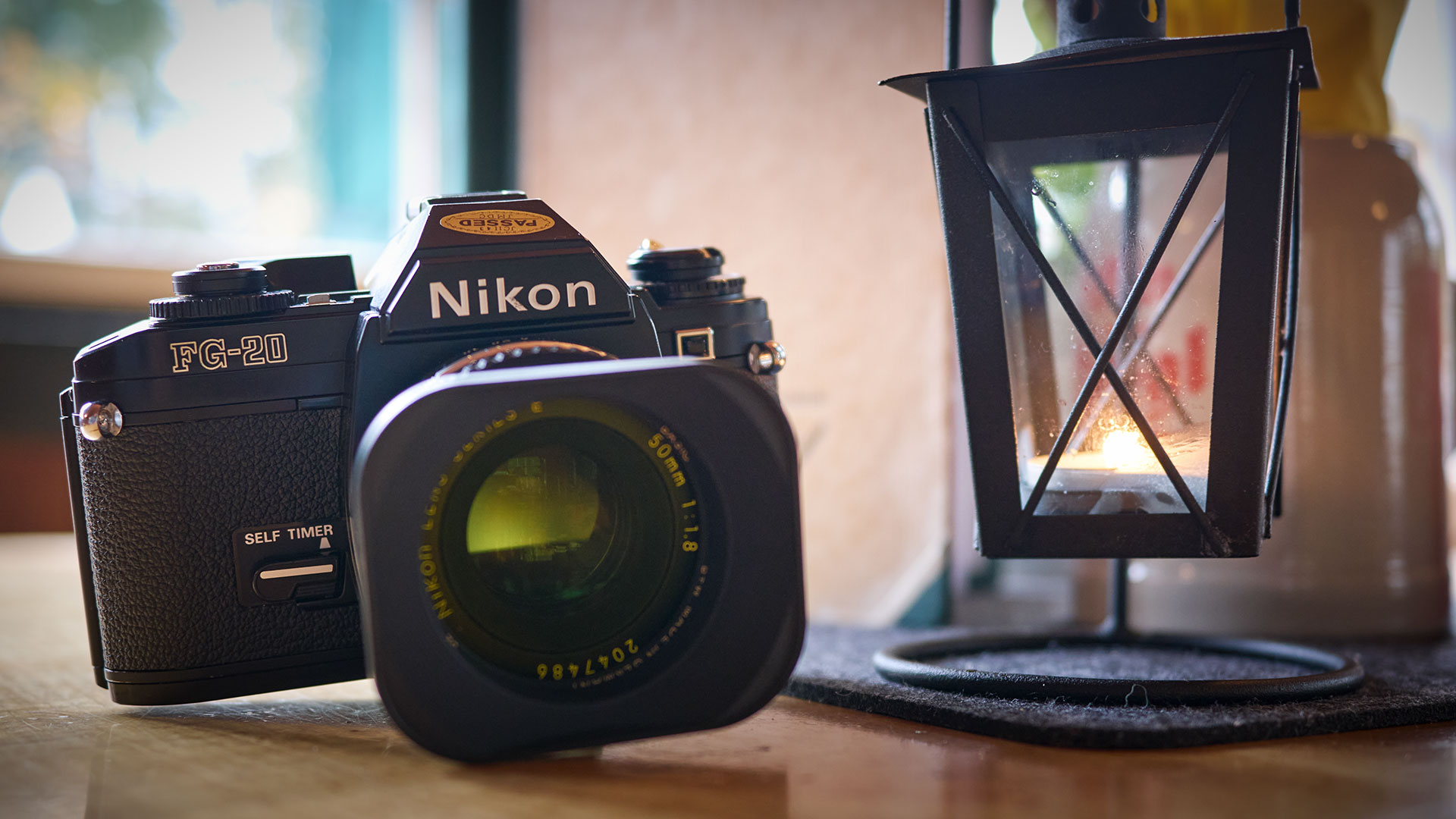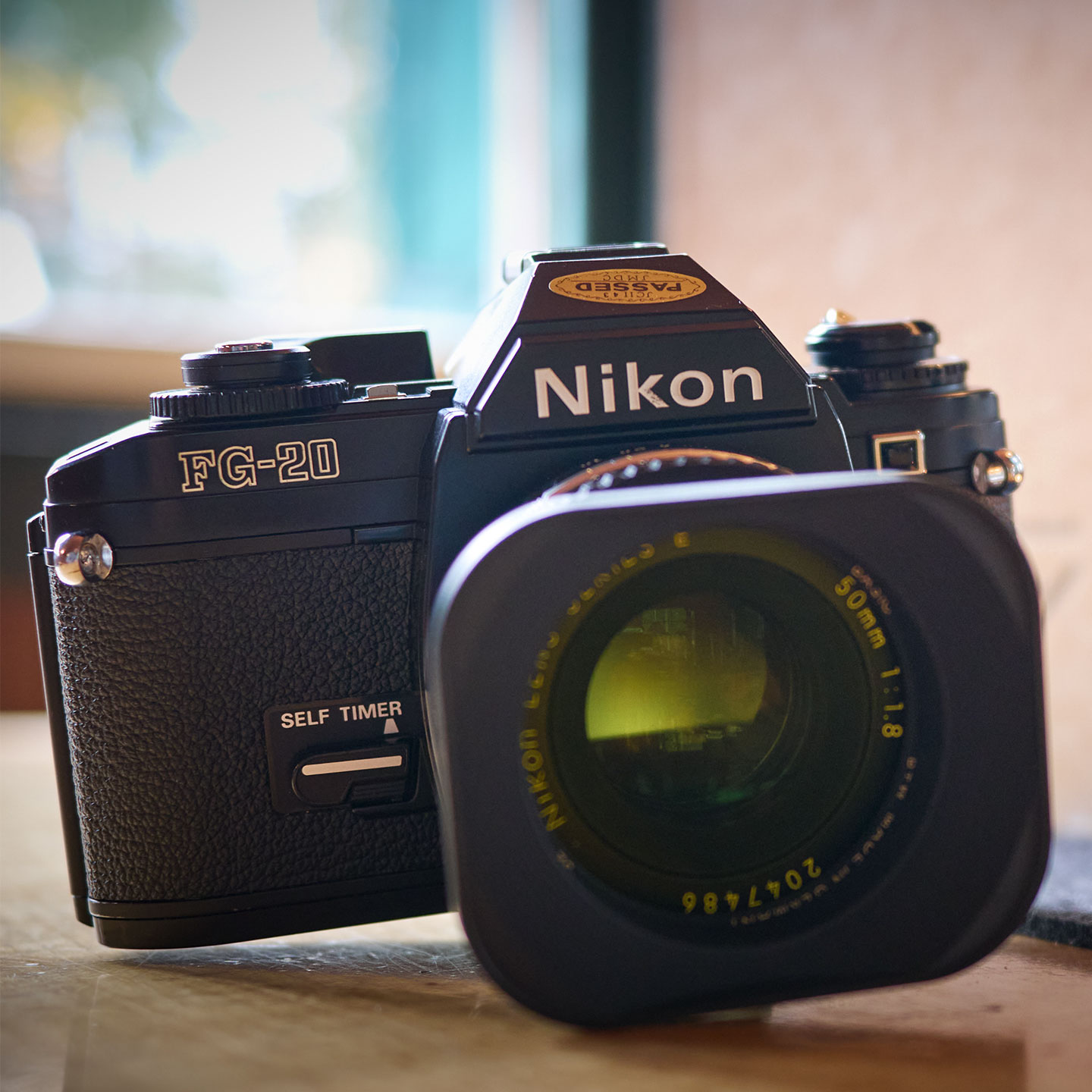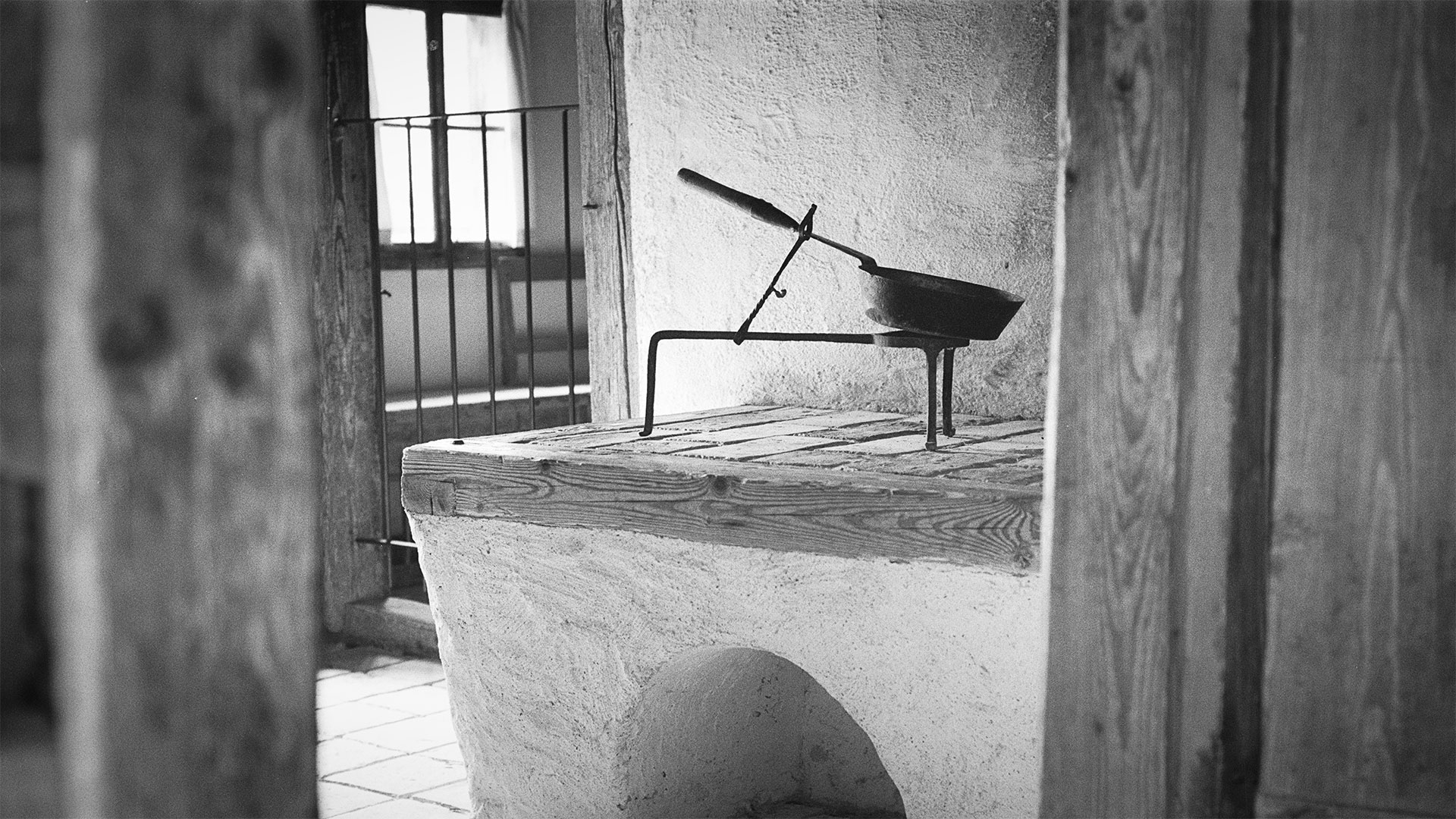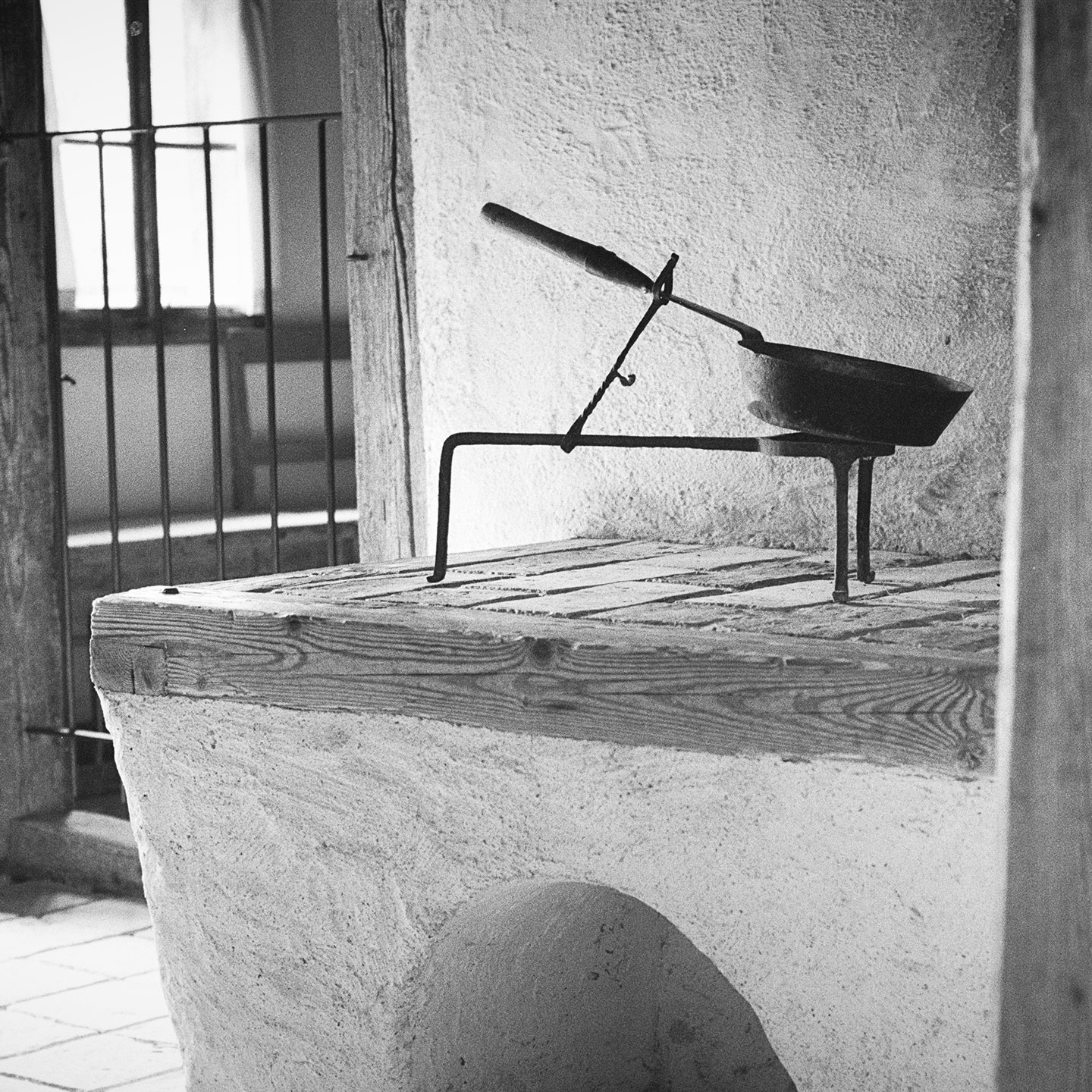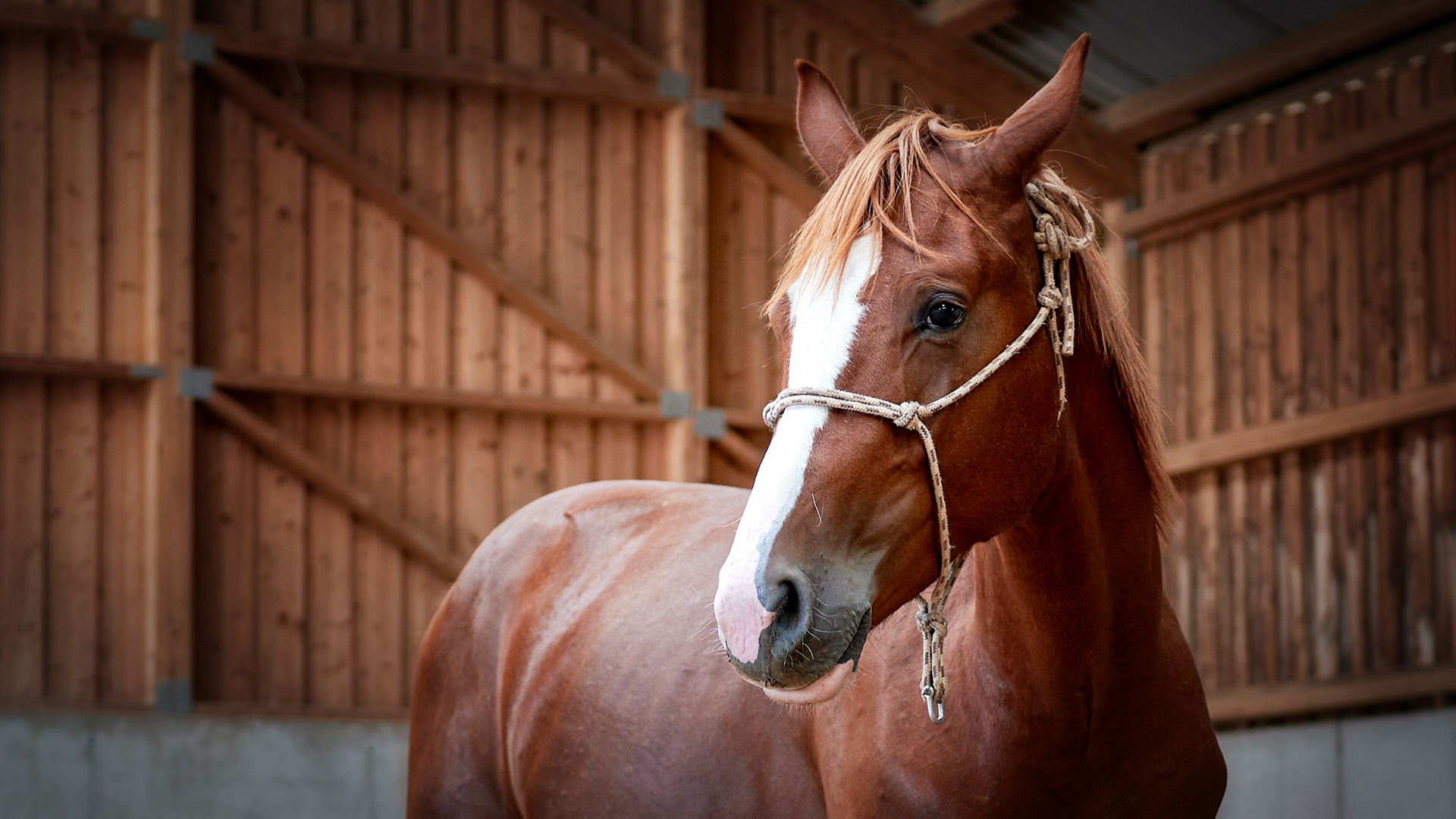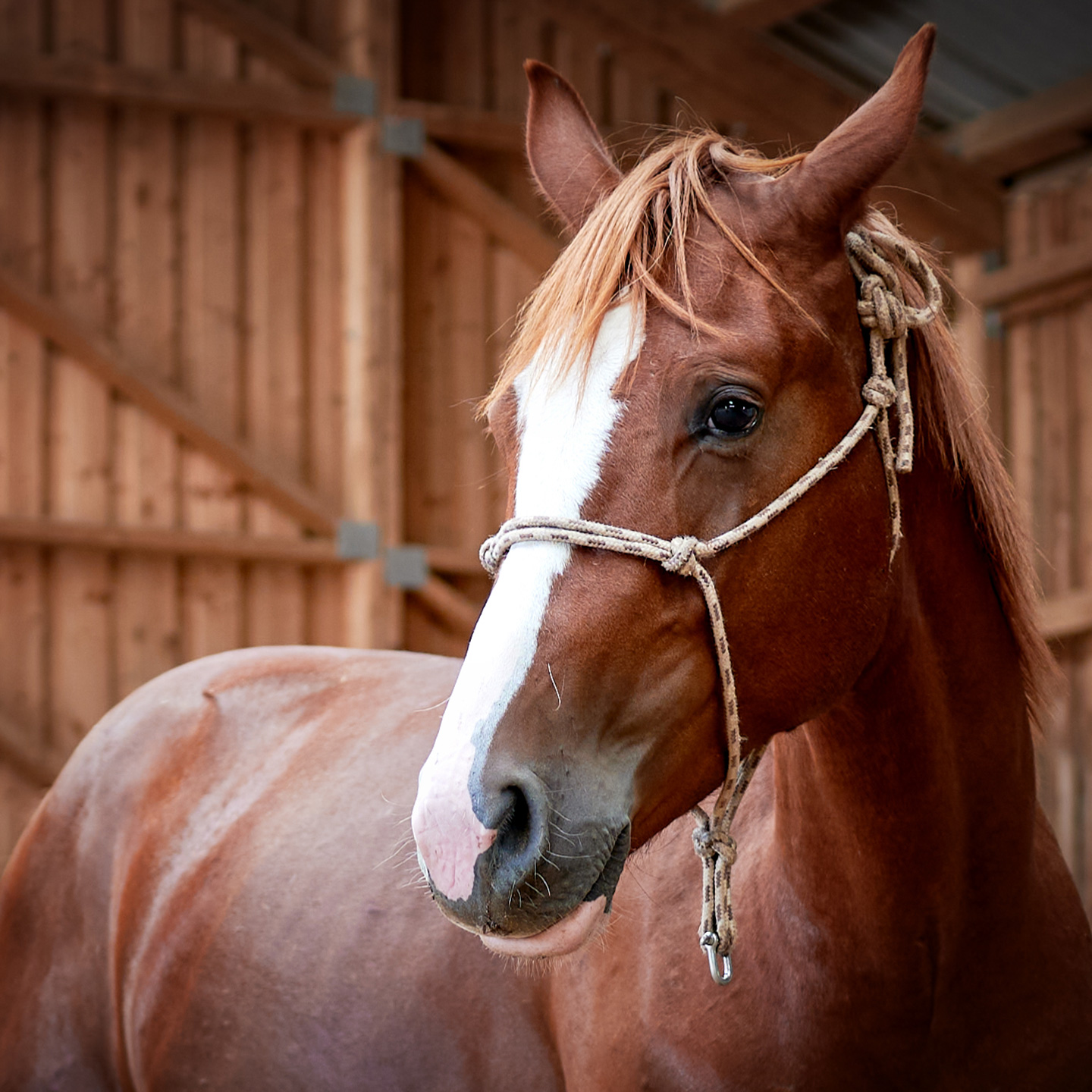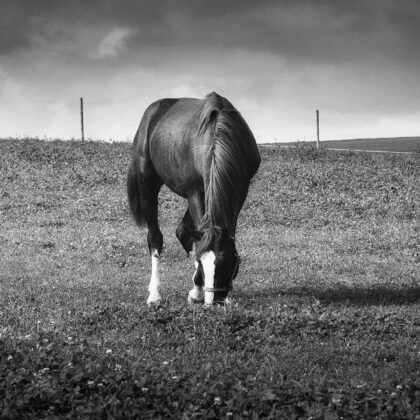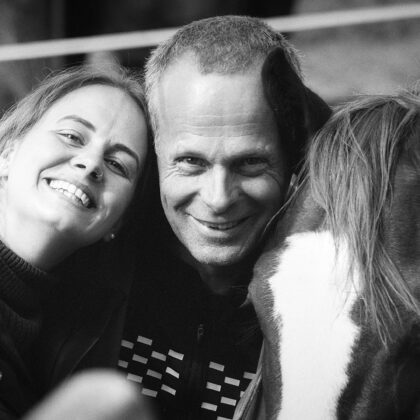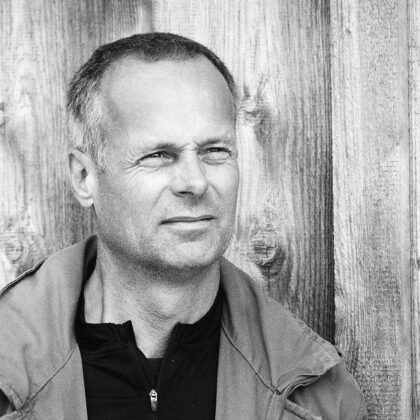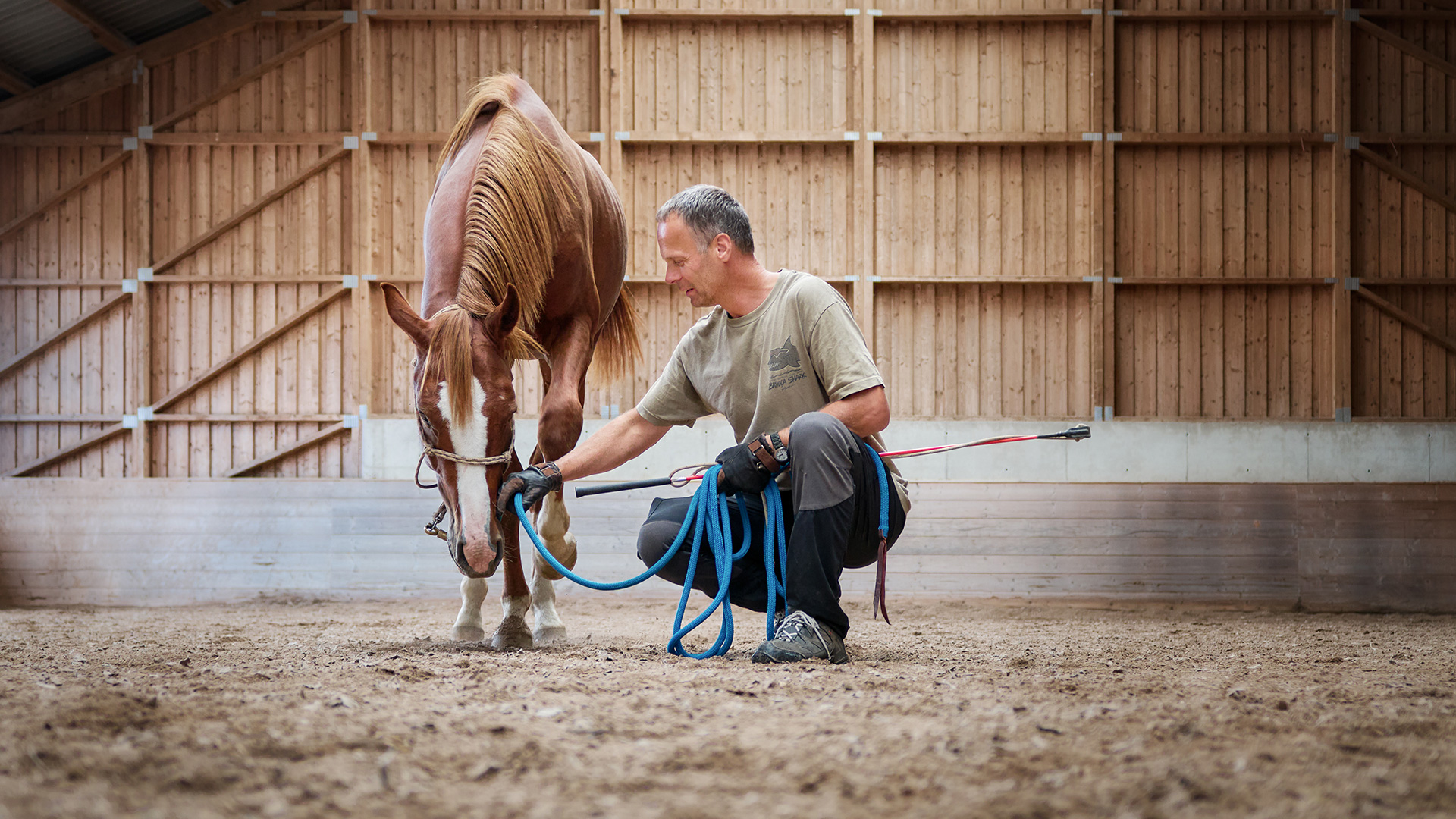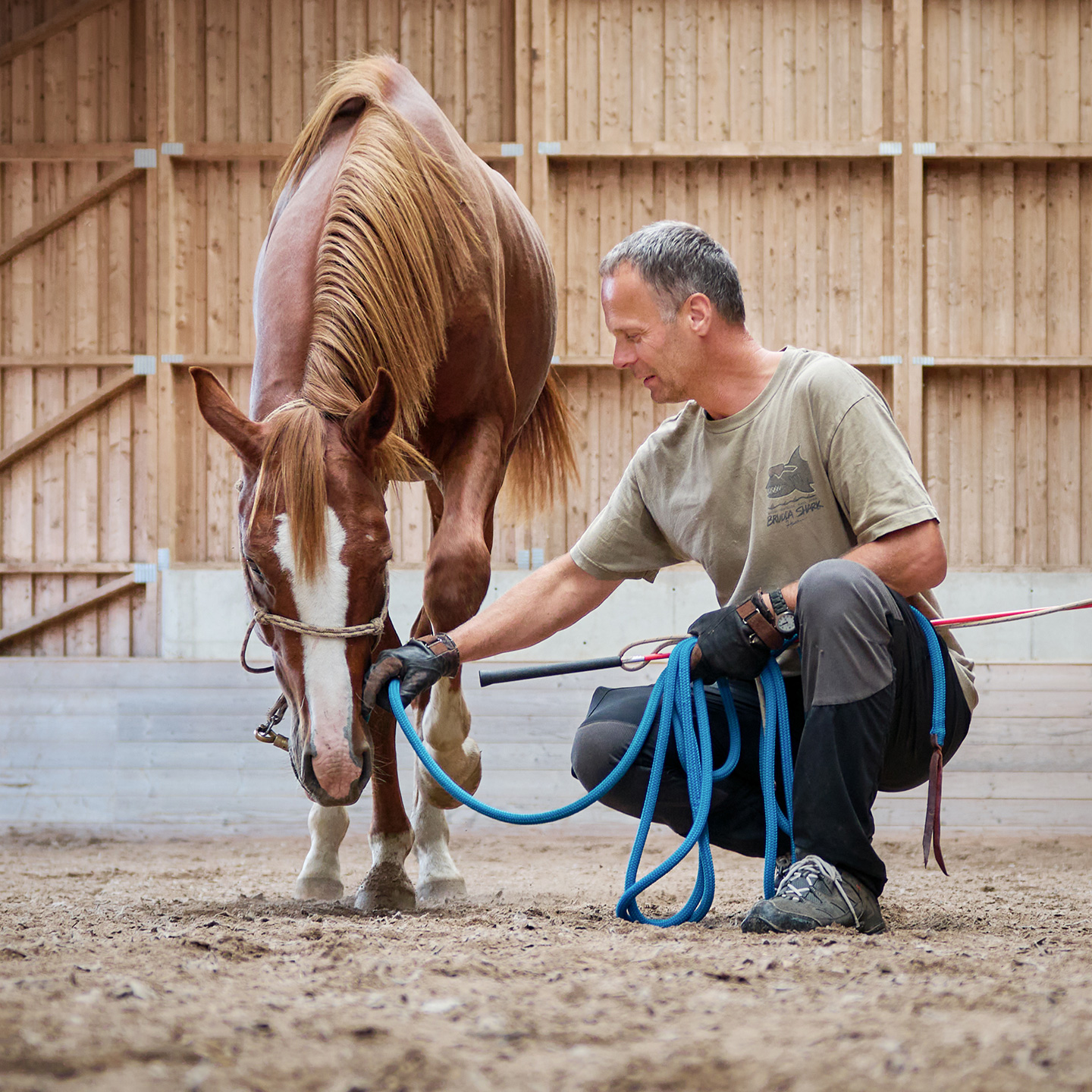„How your digital camera can save your life as a survival tool.”
„How your digital camera can save your life as a survival tool.”
„How your digital camera can save your life as a survival tool.”
Imagine you are traveling in the northern regions, near the Arctic Circle. You know the time but it’s not getting dark. Your GPS device has failed and it is very cloudy and you can’t see the sun. You have lost your bearings and your magnetic compass is showing you the wrong direction due to your proximity to the polar region. It’s enough that you can’t trust the magnetic compass. Bad luck, I would say. Now what? How do you find the cardinal points? Not you, but your digital camera :-), your CPL filter and your tripod with degree scale. Assuming that you know how a polarizing filter works. I assume you do, otherwise you wouldn’t have one with you.
So the aperture priority. Make sure that your ISO value is fixed and open your aperture. Activate the live view. Point your camera at a fixed point in the sky (first measurement). Now slowly rotate your CPL filter and observe the shutter speed on the display. Note the range (fastest to slowest shutter speed). Turn the camera counter-clockwise by 10 degrees on your scale and measure the shutter speed range again. Do this until you are all the way around. The slowest shutter speed shows you the area 90 degrees to the sun. The fastest shutter speed shows you the direction of the sun (or directly opposite). The brighter of these two “fastest shutter speeds” is the actual direction of the sun. The shutter speed is your main indicator: a longer time means maximum polarization, a shorter time means minimum polarization. If you know the time and the position of the sun you can determine the cardinal directions.
On a polar day, when the sun is visible for a long period of time (even if obscured by clouds), it still moves in a circle around you. If you know where it should be at a certain time of day (e.g. at midnight in the north at midday in the south – this depends on the exact latitude), you can deduce the other cardinal points from this. This article with this content was first published by me on 03.07.2025. All subsequent articles on this topic have been based on this article. PS: How did I come up with this idea? It was probably the Vikings who used crystals for the double refraction of light for nautical navigation.
„Wie dir deine Digitalkamera als Survival Tool dein Leben retten kann.”
„Wie dir deine Digitalkamera als Survival Tool dein Leben retten kann.”
„Wie dir deine Digitalkamera als Survival Tool dein Leben retten kann.”
Stell dir vor du bist in den nördlichen Gefilden, in der Nähe des Polarkreises unterwegs. Du kennst die Uhrzeit und es wird nicht dunkel. Es ist Sommer im fast ewigen Eis. Dein GPS Gerät ist ausgefallen und es ist sehr stark bewölkt und du siehst die Sonne nicht. Du hast deine Orientierung verloren und dein magnetischer Kompass zeigt dir aufgrund der Nähe zur Polregion die Himmelsrichtung falsch an. Es reicht schon, dass du dem magnetischen Kompass nicht vertrauen kannst. Blöd gelaufen würde ich sagen.
Was nun? Wie findest du die Himmelsrichtungen. Du nicht aber deine digitale Kamera :-), dein CPL Filter und dein Stativ mit Gradskala. Vorausgesetzt wird, dass du weißt wie ein Polfilter funktioniert. Ich gehe davon aus, sonst hättest du keinen mit.
So kannst du die Sonne finden und die Himmelsrichtungen bestimmen: Stelle deine Kamera auf ein Stativ mit einer Gradskala. Aktiviere den Av/A Modus, also die Blendenautomatik. Versichere dich, dass dein ISO Wert fix eingestellt ist und öffne deine Blende. Aktiviere den Live-View. Richte deine Kamera auf einen fixen Punkt am Himmel (erste Messung). Drehe nun deinen CPL-Filter langsam und beobachte die Verschlusszeit auf dem Display. Merke dir die Spanne (kürzeste bis längste Verschlusszeit). Schwenke die Kamera gegen den Uhrzeigersinn um 10 Grad auf deiner Skala und Messe die Spannen der Verschlusszeit erneut. Solange bis du einmal rundum bist. Die längste Verschlusszeit zeigt dir den Bereich 90 Grad zur Sonne an. Die kürzeste Verschlusszeit zeigt dir die Richtung der Sonne (Oder direkt entgegengesetzt). Die hellere dieser beiden „kürzesten Verschlusszeiten“ ist die tatsächliche Sonnenrichtung. Die Verschlusszeit ist dein Hauptindikator: Eine längere Zeit bedeutet maximale Polarisation, eine kürzere minimale Polarisation. Wenn du die Uhrzeit und die Position der Sonne kennst kannst du die Himmelsrichtungen bestimmen.
Am Polartag, wenn die Sonne über einen langen Zeitraum sichtbar ist (auch wenn durch Wolken verdeckt), bewegt sie sich immer noch im Kreis um dich herum. Wenn du weißt, wo sie zu einer bestimmten Tageszeit stehen sollte (z.B. um Mitternacht im Norden um Mittag im Süden – das hängt vom genauen Breitengrad ab), kannst du daraus die anderen Himmelsrichtungen ableiten. Dieser Artikel mit diesem Inhalt wurde am 03.07.2025 von mir erstveröffentlicht. Alle die dieses Thema später behandeln, haben sich an diesen Artikel angelehnt. PS: Wie kam ich auf diese Idee? Die Wikinger waren es, die wahrscheinlich Kristalle für die doppelte Lichtbrechung zu nautischen Navigation verwendeten.
„Der berühmte Leica Look mit der Nikon Z6”
„Der berühmte Leica Look mit der Nikon Z6”
„Der berühmte Leica Look mit der Nikon Z6”
Fragt man Leica Fotografen, warum sie mit einer komplett überteuerten Kamera die weniger kann als die Topmodelle der anderen Hersteller und dabei wesentlich mehr kostet fotografieren, dann ist die häufigste Anwort „Der Leica Look“. Wie ensteht der Leica Look? (In diesem Fall die SL2). Durch die kamerainterne Hard- und Software, durch das Farbprofil der Kamera, durch das Objektiv, durch offenblendiges Fotografieren und der Nachbearbeitung. Das Farbprofil kann mit einer Colorcheckerkarte jederzeit angepasst werden. Der Stolperstein an der Geschichte sind die Objektive, die einen wesentlichen Baustein des Farblooks darstellen. Jedes Objektiv hat seine Charaktaristik und wirkt direkt auf die Farben bzw. das Farbprofil ein. Auch Verzerrungen und Verzeichnungen der Objektive spielen eine Rolle. Also ein klassischer „Sisyphus“ einen Leica Look mit einem anderen Hersteller zu erzeugen.
Wenn Fotografen bei Kundenprojekten zusammenarbeiten, arbeiten sie mit ihrem Equipment, das zumeist unterschiedlich vom Hersteller ist. Darum kann es notwendig sein, dass z.B. ein Nikon Fotograf seine Bilder an einem Leica Look anpassen muss und v.v. Dem Kunden ist nicht zuzumuten, dass er Fotos mit unterschiedlichen Farblooks zu akzeptieren hat. Mit demenstprechenden Harmonisierungs – Presets bzw. mit angepassten Farbprofilen, kann das schnell gewährleistet werden. Das muss aber mit jedem Objektiv mit dem der Kollege arbeitet erstellt werden. Vintage Linsen haben oft einen Gelbstich aber auch der ist mit der Farbbalance oder mit dem Weißabgleich erzeugbar. Offenblendige Objektive hat Nikon auch. Also rann an die offenblendige Gegenlicht Portraitfotografie, Weißabgleich anpassen und Farblook drüber, fertisch ist das Leica Bild. (Im obrigen Bild: Links Leica SL2, rechts Nikon Z6 mit Farbanpassung)
„Makro Fotografie”
„Makro Fotografie”
„Makro Fotografie”
Die Kombination Gegenlicht, Makroobjektiv, Stacking durch Kamera interne Fokusverlagerung und Helicon Fokus Pro ist immer eine heikle Sache. Funktioniert es oder nicht? Mit dem neuen Nikkor MC 50mm/2.8 ist Nikon ein Objektiv der Spitzenklasse gelungen. Abbildungsmaßstab 1:1 bei 16 cm Naheinstellungsgrenze und die kleinste Stufe in der Fokusverlagerung bringen sogar bei Gegenlicht einen tollen Stack. Ich bin begeistert. Nochdazu gibt es bei den neuen Nikons in der Bildrückschau die Möglichkeit, sich die Farbtemperatur eines Bildes in der Kamera anzeigen zu lassen. So konnte ich in meiner kleinen Godox M1 Dauerleuchte die richtige Farbtemperatur einstellen und gegen das Sonnenlicht die Blüten aufhellen und ein Farbtemperatur ausgeglichenes High Key schießen.
MENSCH
MENSCH
MENSCH
Ich hatte von Shania vorigen Herbst ein Bild gesehen, dass ihr weniger schmeichelte. Trotzdem konnte ich erkennen, dass sie als Fotomodel viel Potential hat. Und recht hatte ich damit. Im Rahmen eines TFP Shootings sind wir die ersten Schritte gegangen und ich bin mir sicher, dass da noch einige Shootings folgen werden. Hast deinen Job sehr gut gemacht Shania.
Jürgen Hauer
Jürgen Hauer
Jürgen Hauer
„The WOW photo recipe”
„The WOW photo recipe”
„The WOW photo recipe”
If you stick to the division into thirds, golden ratio and a correct exposure, you will get a decent photo but not a WOW picture. But the ingredients for a WOW are well known. Light, focal length, perspective and image composition with a clear statement that triggers emotions in the viewer. The WOW picture is ready. The photo below shows a backlight situation with little edge light on the rope and an enhancement by discreet dodging and post exposure (Dodge and Burn) in the area of the footbridge. This technique brings more 3D into a two-dimensional image. The minimalism in the image composition. Although the bird is not even one percent of the image, it is clearly recognizable as the main subject. The negative spaces in the image that do not contain structural information (black and white areas) reinforce the silhouette of the bird.
Even in color photography, I hardly have a photo without curiosity gaps, which are small black areas that are closed and show no structure. They are supposed to trigger the thought in the viewer – „What will be there?“ E.g. a forest with which one sees perhaps still 2 meters in the depth structure and behind it is only black space.
Why is now this bird silhouette no WOW picture (For me just not)? The photo is handicraft cleanly made, it is considered the light and a minimalism. There are Curiosity Gap’s enough spaces for interpretation. So everything is good. No for me not, it triggers in me no emotion. Conclusion: The photo can still be made so cleanly, if it triggers no emotion ensteht no WOW effect.
So enjoy browsing my website, you will surely find one or the other WOW photo.So when is a photo a WOW picture? – It is when you show it to someone you don’t know and their reaction is WOW. For you, it’s a WOW picture when you still like looking at it after 3 years. It’s simple, isn’t it 🙂
Jürgen Hauer
Jürgen Hauer
Jürgen Hauer
„Infrared processing”
„Infrared processing”
„Infrared processing”
Infrared film was an important stylistic device in B&W photography. All of today’s digital sensors have infrared blocking filters built in. With some camera manufacturers, you can also have this blocking filter removed. But this costs quite a bit of money and the camera sensor is also only suitable for infrared photography.
This effect can be easily achieved with image processing programs. With the picture composition and motive selection one should pay attention to the fact that many chlorophyll-containing plants, tree trunks or e.g. tiled roofs in the color red or deep blue sky is present. In the infrared range, yellow/green turns to white and red to black. The contrast-luminance sliders in the SW conversion and in the HSL range can be set to produce an image that looks as if the image was shot with an infrared film or sensor.
Jürgen Hauer
Jürgen Hauer
Jürgen Hauer
„Salzburg city”
„Salzburg city”
„Salzburg city”
This will certainly not be a trend, but Leica recently released another monochrome digital camera, the Leica Q2 monochrome with 40 MP for a mere 5,500 Euros. In analog times, it was hardly possible to bring such a strong contrast range to black and white photography as is possible with today’s digital cameras and lenses. The images were softer and didn’t have as many shades of gray, due to the analog film stock.
The softness is also beautiful and certainly has a lot of charm. However, I am fascinated by today’s technology and the possibilities it offers in black and white photography. Through focus stacking and high contrast RAW development, a sharpness can be brought into the micro contrasts of the images, creating a very clean look. I am aware that the human eye and brain looks for the softness in B&W images. I try not to imitate an old look in my B&W photography, but to develop a crisp one and rediscover it for myself. Well, everyone will not like it. So what? I like it 😉 A big exception are head portraits in black and white, I shoot them mainly analog. I’m either moving in the direction of shooting portraits analog only or shooting one set digital and one analog. Time will tell.
Jürgen Hauer
Jürgen Hauer
Jürgen Hauer
„Analogue photography”
„Analogue photography”
„Analogue photography”
35 years ago, as a reportage photographer, my Nikon FG-20 was stolen at an event. Now I could acquire the same make with the 50mm 1.8 pancake, note, in new condition for little money. The FG-20 is the smallest and lightest analog SLR Nikon had ever built. It was produced for two years from 1984 – 1986.
As is so often the case, there are wars of faith in photography. The analog photographers looking for the finest grain. The digital photographers who interpret brightness noise as fine grain. And I belong to the faction that if I’m going to shoot analog, I want to see grain, otherwise I might as well use my digital camera. The Ilford Delta 400 has a very flat fine grain. Combined with a yellow filter, I get an ounce more contrast, as this film tends to be lower contrast. Not to be compared with an HP5+ or T-max 400. Now it’s a matter of waiting for the film to come back from the specialist lab. And there it is 🙂 Nice contrast with fine soft grain
Jürgen Hauer
Jürgen Hauer
Jürgen Hauer
„Analogue photography”
„Analogue photography”
„Analogue photography”
There are photographers who show in their published works how portraits nowadays can be made highly brilliant, modulating and contrasty with modern lights and lenses and enough light setting knowledge. From the 2D medium, a 3D-like impression is created that makes the model literally jump out of the photo. When you see such a well done picture, you think „WOW“, great job.
Some time ago I had the opportunity to see a whole portfolio of such work at a photographer. But I also noticed that I got bored after the 20th model, although the works were brilliant, but did not pay further attention to the thought.
Recently at another colleague I saw the complete opposite. Very subtle light settings much flatter and analog photographed. Typically analog soft, almost a little out of focus. And when I was browsing through this portfolio I remembered the colleague from before, only with the difference that I did not get bored with the less brilliant almost a little out of focus images.
Then I looked through my entire digital black and white portfolio. Sure great pictures but always with the analog B/W images I stuck longer. And then the portrait of Gottfried came about. Not brilliant and shiny with a lot of pomp, almost a little out of focus but with a lot of power.
I’m going to change my way in B&W portrait photography and go back to analog, though shooting digital portraits along for the customers, the customer should then decide for himself. For my freelance work it’s completely different, I want to go back to analog. Economically speaking, this is almost not feasible, because the pure material costs for an analog image are about one euro and 100 photos thus cost 100 euros. and if only every 3rd image from a film what will increase the material costs steeply. So economically seen an expensive fun and almost not presentable.
If there would not be this eye / brain soothing look of an analog B/W portrait against. Surely you could bend a digital photo in that direction as well. A little Gaussian blur here and there, a little digital grain there, a few analog image errors added and good it is and the look is finished. Clearly, it’s far too complex, time-consuming, and therefore far too expensive due to the processing time. I’d rather go straight back to analog.
„Analoge Fotografie”
„Analoge Fotografie”
„Analoge Fotografie”
Es gibt Fotografen die in ihren veröffentlichten Arbeiten zeigen, wie man Portraits heutzutage mit modernen Lichtern und Objektiven und genügend Lichtsetzungswissen hochbrilliante, modulierende und kontrastreiche Fotos gestalten kann. Aus dem 2D Medium entsteht ein 3D artiger Eindruck der das Modell förmlich aus dem Foto springen läßt. Wenn man so ein gut gemachtes Bild sieht, denkt man „WOW“, toll gemacht.
Vor geraumer Zeit hatte ich die Gelegenheit bei einem Fotografen ein ganzes Portfolio solcher Arbeiten sehen zu können. Mir fiel aber auch auf, dass mir nach dem 20ten Modell langweilig wurde, obwohl die Arbeiten brilliant waren, schenkte aber dem Gedanken keine weitere Aufmerksamkeit.
Vor kurzem bei einem andern Kollegen sah ich das komplette Gegenteil. Sehr dezente Lichtsetzungen viel flacher und analog fotografiert. Typisch analog weich, fast schon ein wenig unscharf. Und als ich durch dieses Portfolio blätterte fiel mir der Kollege von vorher ein, nur mit dem Unterschied, dass mir bei den weniger brillianten fast ein wenig unscharf wirkendenden Bildern nicht langweilig wurde.
Daraufhin schaute ich mein ganzes digitales Schwarz/Weiß Portfolio durch. Sicher tolle Bilder aber immer bei den analogen S/W Bildern blieb ich länger hängen. Und dann kam das Portrait von Gottfried zustande. Nicht brilliant und glänzend mit viel Pomp, fast ein wenig unscharf aber mit sehr viel Kraft.
Ich werde meinen Weg in der S/W Portraitfotografie ändern und zurück zu analog gehen, zwar für die Kunden digitale Portraits mitschießen, der Kunde soll dann selbst entscheiden. Für meine freien Arbeiten verhält sich das ganz anders, ich will zurück zu analog. Wirtschaftlich gesehen ist das fast nicht darstellbar, weil die reinen Materialkosten für ein analoges Bild bei zirka einem Euro liegen und 100 Fotos somit 100 Euro kosten. und wenn nur jedes 3te Bild von einem Film was wird die Materialkosten steil ansteigen. Also wirtschaftlich gesehen ein teurer Spass und fast nicht darstellbar.
Wenn da nicht dieser dem Auge/Hirn beruhigende Look eines analogen S/W Portraits entgegenstehen würde. Sicher könnte man ein digitales Foto auch in diese Richtung biegen. Ein wenig gaußscher Weichzeichner da und dort, ein wenig digitales Korn dazu, ein paar analoge Bildfehler eingebaut und gut ist es und der Look ist fertig. Ganz klar, viel zu aufwändig, zeitintensiv und somit durch die Bearbeitungszeit viel zu teuer. Dann lieber gleich wieder analog.
„Analoge Fotografie”
„Analoge Fotografie”
„Analoge Fotografie”
Vor 35 Jahren wurde mir als Reportagefotograf meine Nikon FG-20 bei einer Veranstaltung geklaut. Jetzt konnte ich das selbe Fabrikat mit dem 50mm 1,8 Pancake, man beachte, im Neuzustand für wenig Geld erwerben. Die FG-20 ist die kleinste und leichteste analoge Spiegelreflexkamera die Nikon je gebaut hatte. Sie wurde zwei Jahre von 1984 – 1986 produziert.
Wie so häufig gibt es in der Fotografie Glaubenskriege. Die Analogfotografen, die nach dem feinsten Korn suchen. Die Digitalfotografen die Heligkeitsrauschen als feines Korn interpretieren. Und ich gehöre halt zu der Fraktion, wenn ich schon analog fotografiere, dann möchte ich Korn sehen, sonst kann ich gleich meine digitale Kamera nehmen. Der Ilford Delta 400 hat ein sehr flaches feines Korn. In Kombination mit einem Gelbfilter bekomme ich um ein Quäntchen mehr Kontrast, da dieser Film eher kontrastärmer ist. Nicht zu vergleichen mit einem HP5+ oder T-max 400. Jetzt heißt es warten, bis der Film vom Fachlabor zurückkommt. Und da ist er 🙂 Schöner Kontrast mit feinem soften Korn.
Videoproduktion Pferde Portrait
Videoproduktion Pferde Portrait
Videoproduktion Pferde Portrait
Mit Tieren zu arbeiten ist immer etwas besonderes. Die Planbarkeit einer Produktion funktioniert nur bedingt. Bei Oakley war das aber überhaupt kein Problem, er zeigte während der zweistündigen Dreheinheiten an sechs Drehtagen überhaupt keine Unmutsäußerungen. Gerade im Gegenteil, er war immer neugierig und fürchtete sich auch nicht vor meinem Gimbal.
Auch wenn ich außer seinem Sichtfeld war, ließ er mich nahe an sich ran. Durch die wirklich klare Kommunikation mit dem Besitzer Gottfried konnten wir alle Shots in die Kamera bringen, die wir uns für die Drehtage vereinbart hatten. Oakley ist ein zwei Jahre alter Hengst der gerade nach Parelli ausgebildet wird. Wir wollten mit dem Kurzfilm einen kleinen Einblick in diese Arbeit geben. Es entstand ein schöner emotionaler Film.


